Crop Diversification Helps Tobacco Farmers Build Resilience
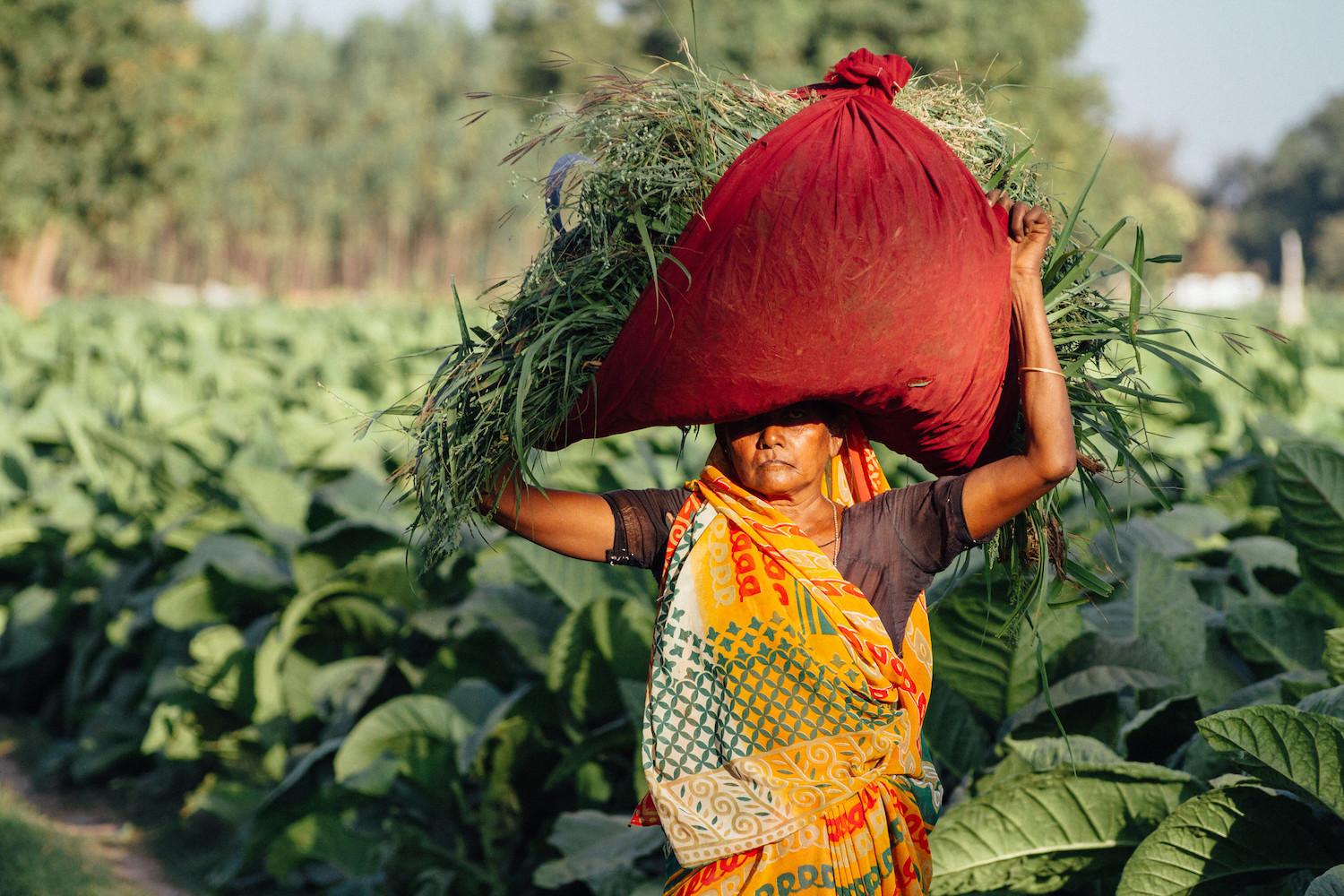
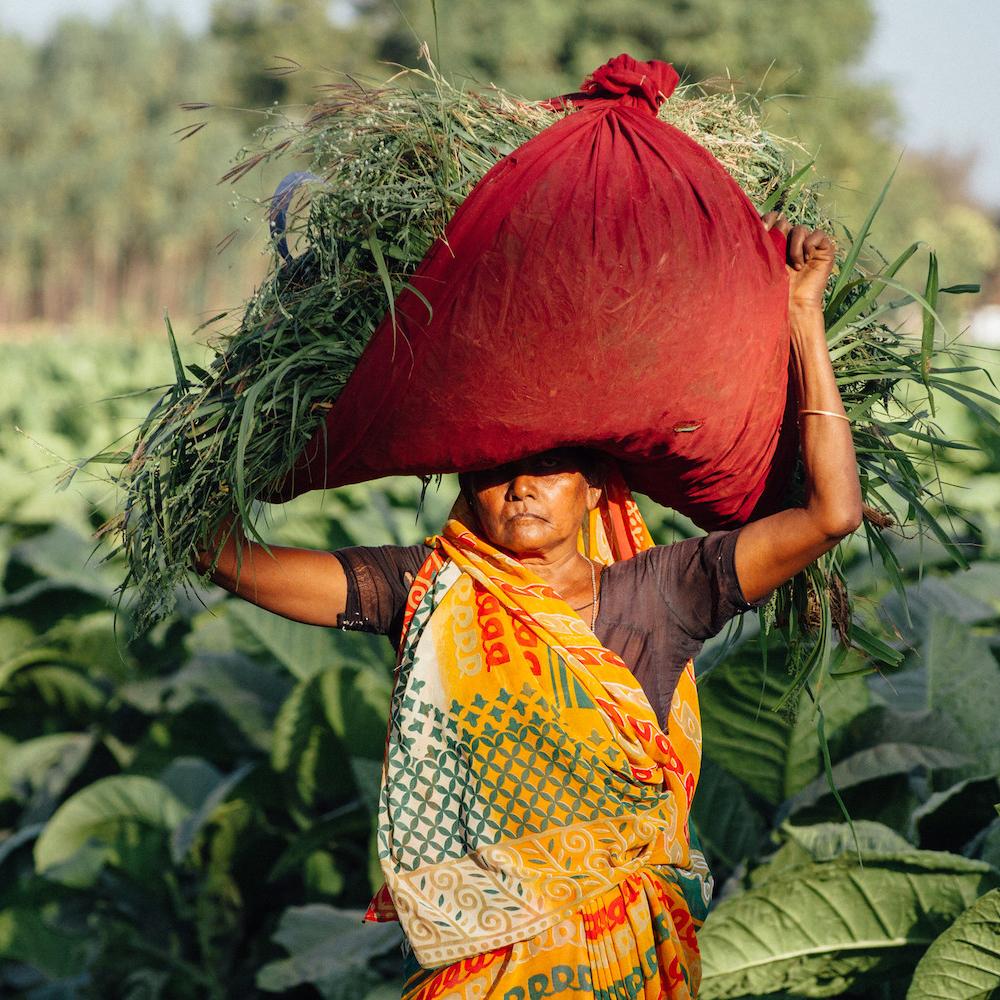
This article series is sponsored by Philip Morris International.
More than 60 percent of those living in extreme poverty are smallholder farmers, according to the World Bank. In addition to providing up to 80 percent of the food supply in developing countries, these smallholders also grow crops that end up in large companies’ supply chains—meaning industry has a clear role to play in improving their quality of life.
Philip Morris International (PMI) has a stated goal for all of its tobacco supply chain farmers to achieve a living income by 2025, whether they’re contracted by the company or its suppliers. This means a farmer’s annual net income is enough to provide essentials like food, water, housing, education, healthcare, unexpected expenses and transportation for every member of his or her household.
Though tobacco is the primary source of income for most of PMI’s contracted farmers, more than 70 percent of them also grow food for their own consumption, according to the company. Launched in 2018, PMI’s crop diversification initiatives aim to give farmers the tools to grow more food crops for sale, moving them closer to a living income, said Mauro Gonzalez, director of sustainable agriculture for PMI.
“Tobacco is one source of revenue that allows farmers to achieve this living income. When there is still a gap to be addressed, we begin to introduce diversification initiatives that give farmers the opportunity to grow complementary crops to supplement what they’re earning from tobacco production,” Gonzalez told TriplePundit.
Moreover, PMI aims to phasing out conventional cigarettes as quickly as possible, including the switching of 40 million adult smokers who would otherwise continue smoking to smoke-free products by 2025. Since smoke-free products like e-cigarettes require significantly less tobacco than a conventional cigarette, the company expects its demand for tobacco to decline over the long term.
“We don't see the impact happening overnight—there’s still some way to go,” Gonzalez said. “Nevertheless, we want to be a responsible company and start to prepare the ground for when this situation is more evident. We want to build resilience in these farming communities and build expertise so they’re able to grow something else and not rely solely on tobacco for their income.”
However one might feel about its staple crop, PMI’s work in diversification offers one valid case study in what large companies can do to reduce if not eradicate poverty within their supply chains. Here we take a closer look.
Beginning in Malawi
Malawi is the sixth largest tobacco producer in the world and the first country where PMI tested its crop diversification programs. “Malawi was where everything started and where we began to analyze the options farmers have,” Gonzalez told us.
Although its economy has improved significantly over the past decade, this southern African nation continues to struggle with poverty. More than half of its 17.5 million residents live in poverty, according to the World Bank, and 37 percent of children under 5 are chronically under-nourished.
Considering that the vast majority of Malawi’s population earns their living from agriculture, increasing farmers’ capacity to grow a more diverse set of crops has the potential to strengthen the country’s economy while building resilience for the future.
PMI launched its diversification programs in the country in 2018 through a partnership with Palladium, a global impact firm that is implementing USAID's food security program Feed the Future in Malawi.
“Palladium was already working on crop diversification in Malawi, however they didn’t have a very extensive reach in terms of farming communities,” Gonzalez explained. “This is where we saw good synergies and started to develop a plan.”
The company worked with Palladium, other NGOs and PMI suppliers in Malawi to map local crops that could generate income for farmers. Out of this research, the partners concerted their focus on groundnuts, a family of nutrient-dense legumes that comprised Malawi’s third largest export crop in the 1970s.
Groundnut cultivation dropped significantly in Malawi as export markets collapsed in the 1980s and 1990s due to quality issues, but exporters’ appetite for groundnuts has renewed over the past decade. Returning to groundnut cultivation could help smallholder farmers increase their income, as well as provide nutritious food for their families, the partners say.
Over the course of 2018, the partners began outreach with PMI’s suppliers’ farmers and trialed different varieties and new irrigation systems. “It's not just a matter of giving out any seeds. It’s also about providing the right expertise to farmers, the right high-yielding seed, and the right crop inputs, because although they grew groundnuts in the past and some are still growing them today, the technological package for a more profitable crop today is different,” Gonzalez said.
The partners identified beekeeping as another income-generating activity with high profit potential for minimal extra effort.
Developing a new value chain
PMI works with two international suppliers in Malawi that source tobacco from more than 20,000 contracted farmers. Several thousand have already started cultivating groundnuts to supplement their income, and around 500 beehives have been provided to farmers to start beekeeping, Gonzalez said.
These same suppliers will purchase groundnuts directly from the farmers and sell them into domestic and export markets, essentially “developing a new value chain,” he told us. Both suppliers have stated goals for all farmers supplying tobacco to PMI to also grow groundnuts or have another supplemental income stream by 2025, Gonzalez said.
Different fits for different markets: Mozambique, Pakistan and beyond
There is no one-size-fits-all approach to crop diversification, Gonzalez told us, and PMI’s program takes a slightly different shape in every region where it’s employed.
In Mozambique, where nearly 130,000 people grow tobacco as one of their main sources of income, PMI works with the international poverty-alleviation NGO Business for Development. Since 2018, the two organizations together with Mozambique Leaf Tobacco (a supplier of tobacco from Mozambique) have worked on trialing different alternative crops such as cotton, potatoes, and flaking maize. In addition, low-cost irrigation systems for seedbeds and vegetable gardens are distributed to tobacco-farming communities.
In Pakistan, where the tobacco industry is the primary source of livelihood for 1.2 million people, the company is working with the local Hashoo Foundation to help farmers grow market mushrooms while providing support to grow corn, and other vegetables.
Since launching in 2018, the program has since expanded to supplier communities in Brazil, Colombia and the Philippines. “It’s only been two years and we’re still trialing new crops, but the main objective is to deploy this on a wider scale,” Gonzalez said. “From countries like Malawi and Mozambique, where we see that farmers are struggling, to locations where maybe farmers are better off but there is still a need to build resilience for the future. We’re starting where the needs are largest and continuing to develop.”
Image credit: Adam Cohn/Flickr
Clif Bar Wants to Create a Compostable Wrapper
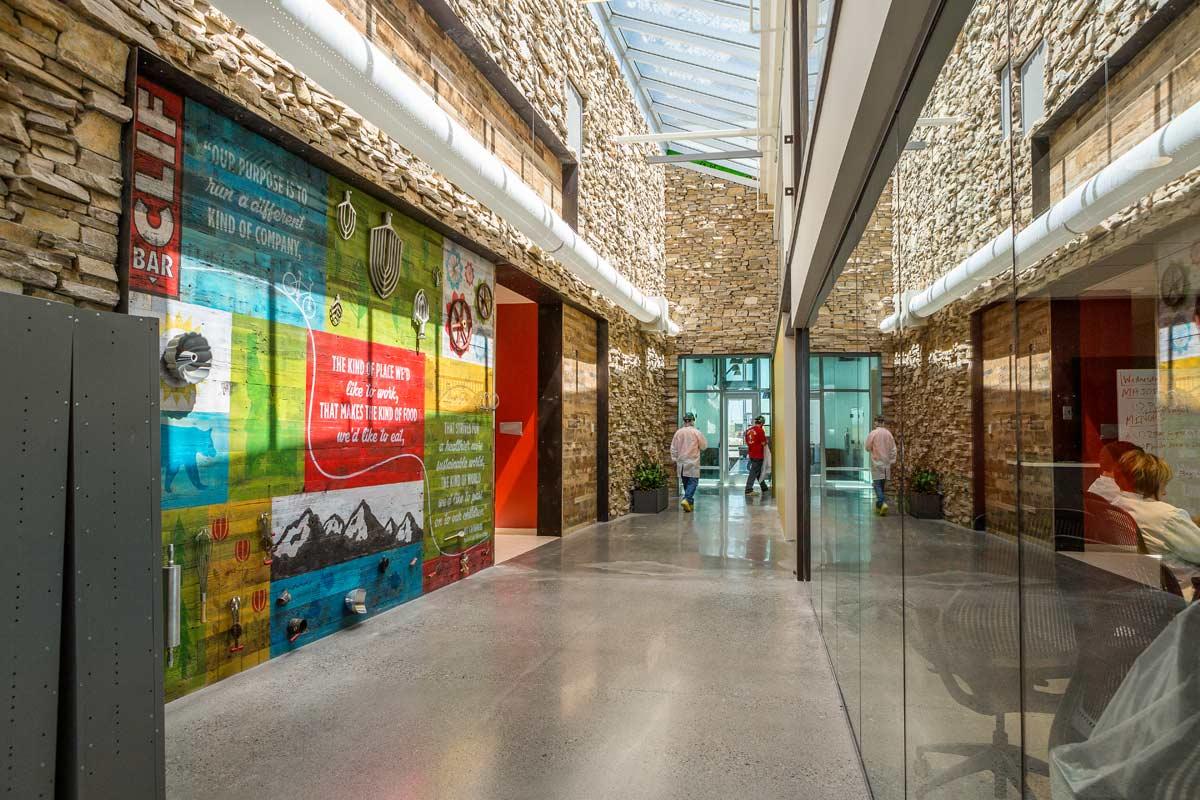
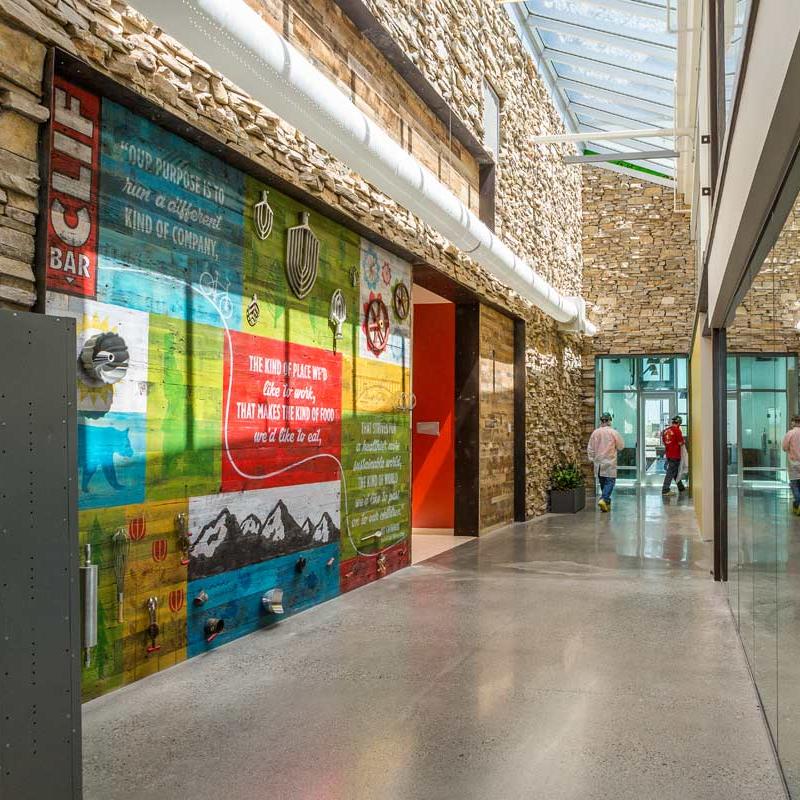
Clif Bar & Co. recently committed to make all of its packaging reusable, recyclable or compostable by 2025. That includes the wrapper for its signature Clif Bar: The company says it already has a cross-functional team in place to develop a compostable alternative by 2021.
Shifting to compostable wrappers will “move [Clif Bar] away from dependence on fossil fuels and toward the vision of our sustainability mantra: ‘Think like a tree,’” Elysa Hammond, the company's vice president of environmental stewardship, told TriplePundit. “Trees run on renewable energy, recycle all waste, and sustain and improve the places they grow.”
Clif Bar's long commitment to reducing plastic in packaging
The company bills this pledge as its “boldest, most urgent commitment yet.” And perhaps it is when you consider Clif's 2025 goals: Beyond the recyclability commitment, Clif pledged to source at least 25 percent of the plastic it uses in packaging from renewable or recycled materials and use 10 percent less packaging overall.
Preventing plastic pollution is key to reducing ocean plastic waste. Every year, at least 8 million tons of plastic waste enter oceans. Clif wants to “prevent plastic waste wherever possible, and as far upstream as we can,” Hammond said. That will happen with “a mix of education, advocacy, and creative solutions across our operations and supply chains,” she added.
Long focused on sustainability, there are several examples of how Clif is already working to prevent plastic pollution. The company is working on achieving zero-waste certification at its bakeries (including the one located in Twin Falls, Idaho, shown above). It is not just striving to prevent plastic pollution in its manufacturing facilities but in all of its operations. It is working to reduce and avoid single-use plastics at outdoor events it sponsors.
As the initiative grows, the company will be “speaking up in support of effective policies that keep plastic bags and other forms of plastic waste out of the environment," Hammond told us.
Educating consumers and partnering with organizations
Clif’s two other 2025 commitments center around education and environmental cleanup. Clif Bar will add the How2Recycle label, a standardized labeling system with recycling instructions, to its packaging to give customers more information about proper disposal.
The company also committed to remove 1 million pounds of plastic from the environment. To achieve that goal, Clif has already brought together employees, athletes, industry, and partners to work on environmental cleanup efforts. The company partners with organizations such as Living Lands and Waters to clean up the Ohio River, for example.
“Through events like these, we’re hoping to raise awareness on the issue of plastic pollution and ultimately change minds and habits,” Hammond explained. “We will be working with our existing partners and building new relationships with organizations on the ground.”
A long journey to making packaging more sustainable
Clif’s journey to make its packaging more sustainable began in 2001 when it introduced Clif Shot Energy Gel with Litter Leash packaging, which has a tear top that folds out of the way during use but stays attached to minimize litter on trails and roads. A year later, the company redesigned the boxes that hold its bars to eliminate 90 percent of shrink wrap, which avoids the use of over 90,000 pounds of plastic a year. In 2003, Clif switched to 100 percent recycled paperboard in these boxes.
The company redesigned its Clif Bar wrappers to be 10 percent smaller in 2015. Two years later, it began using Forest Stewardship Council (FSC) certified paperboard for about 90 percent of the boxes that hold its bars. And it seems compostability is next on this journey — and we'll keep our eyes peeled.
Image credit: Clif Bar & Company Press Room
The Milwaukee Brewers and SC Johnson Throw Plastic Waste a Curveball


Fans of Major League Baseball’s Milwaukee Brewers and users of SC Johnson’s Scrubbing Bubbles will have something new to cheer about this spring: a first-of-its kind program to recycle used plastic cups from the Brewers’ Miller Park into Scrubbing Bubbles’ bottles.
Thirsty spectators go through as many as 1 million cups per season at the stadium, and the hope is to capture the bulk of those with the SC Johnson logo in designated recycling containers. “We feel it is a natural fit,” an SC Johnson spokesman said of the program. “Scrubbing Bubbles is one of SC Johnson’s great home cleaning brands, and it’s one of our products that uses post-consumer recycled content in its packaging.
“Plastic waste is a very important environmental issue for us, so we are continually looking for partnerships that can help us close the recycling loop,” the spokesman told us. “We’re also partnering with the Ellen MacArthur Foundation and Plastic Bank on this issue.”

SC Johnson focuses on finding new markets for recycled plastic
The Brewers are the first professional sports team to connect waste with a specific product in order to address the ongoing problem of finding markets for recycled materials such as plastic. Only about 13 percent of plastic packaging in the U.S. is recycled, and a lot of what is placed into mixed recycling bins is not even recyclable.
Rick Schlesinger, the Brewers' president of business operations, and Fisk Johnson, chairman and CEO of SC Johnson, announced the recycling agreement at the end of January at the Brewers’ stadium, joined by pitchers Brent Suter and Corey Knebel. Suter has also created his own program, Strike Out Waste, to help his teammates decrease plastic use both at the ballpark and at home. “I am excited that the Brewers and SC Johnson are teaming up to bring greater awareness to important issues like recycling and ocean plastics,” Suter said in a prepared statement.
Professional sports keep boosting sustainability efforts
The Brewers-SC Johnson partnership is one of an increasing number of sustainability organizations and programs in the professional sports world. The 10-year-old Green Sports Alliance, which calls itself an environmentally-focused trade organization, has brought together professional teams, sponsors, vendors, and other organizations associated with sports to promote sustainability and share resources and ideas.
Two years ago, the National Football League joined the Green Sports Alliance to promote sustainability efforts league-wide. The Seattle Mariners, one of the founding members of the Alliance, have been implementing greener operations at their T-Mobile Park since 2006 and achieved the American League’s highest recycling rate from 2010 to 2018.
SC Johnson and the Brewers say they plan to cooperate on other ventures during the 2020 season, including Clean Up Days. In addition, each time a Brewers’ pitcher logs a save, SC Johnson and the Brewers will donate to Players for the Planet, an organization of professional athletes committed to promoting recycling, sustainability and reducing plastic and other waste.
“We all need to work together to help close the plastic recycling loop, and I hope this first-of-its-kind initiative with the Brewers will serve as a model for other major league teams, companies and even other sports leagues,” Johnson said.
Image credits: Erik Drost/Flickr, SC Johnson
Social Enterprise Investments Help Former Foster Kids Start Careers in Tech
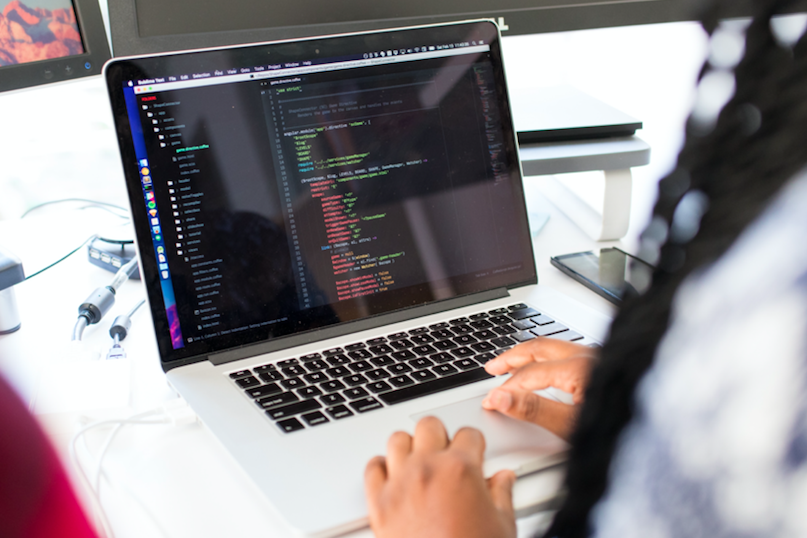
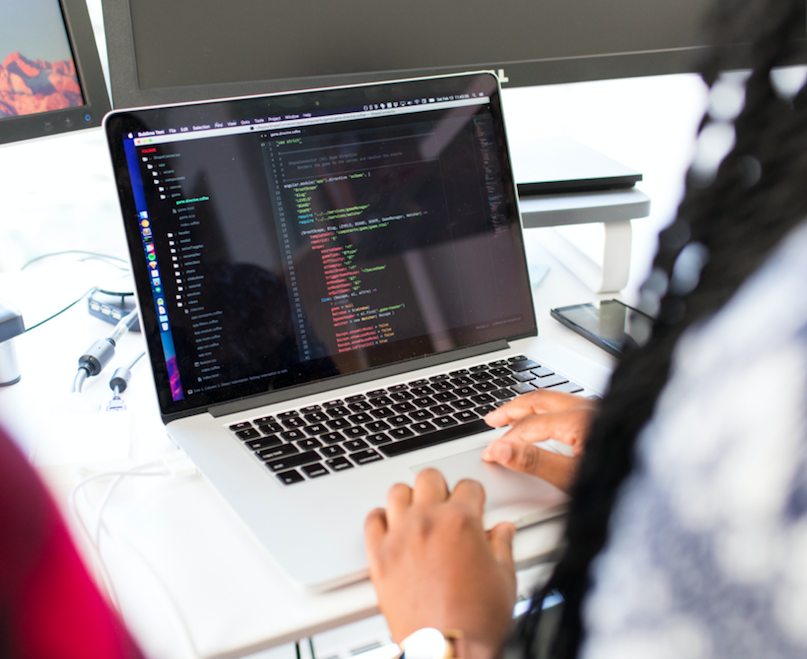
According to a report by the International Labour Organization, 1.4 billion people globally are in vulnerable employment. This means they don’t earn enough money to support their families and often don’t have access to social safety net programs. Social enterprises aim to solve these types of issues, operating businesses that employ vulnerable populations. We know that social enterprises create jobs and contribute to country and global GDP, but many social enterprises struggle with lack of access to capital, networks, and capacity building resources – which hampers their ability to operate at scale and be financially viable.
This is where NESsT comes in. NESsT was created to address the gaps in the entrepreneurial ecosystem, investing in and supporting social enterprises that provide employment opportunities for low-income communities facing isolation, discrimination, lack of job skills, and poor education. NESsT provides tailored financing, business development and advisory services, and tools for entrepreneurs at all stages of development – from blueprint to validation, scale, and eventual exit.
“NESsT is working towards a world where all social entrepreneurs are able to grow their businesses to solve systemic poverty and exclusion. Cisco Systems seeded the NESsT Talent Tool… Talent is what ultimately determines the fate of a company so we decided to launch the platform with that in mind… As a result of our partnership [with Cisco Systems], we are well-positioned to launch additional digital tools to support the different areas of social enterprise success, such as metrics and governance,” explains Nicole Etchart, co-founder and co-CEO at NESsT
Coders Lab is an organization based in Poland that NESsT began investing in and supporting in 2017. They provide training and place people who may face exclusion from high-growth industry careers into meaningful, well-paying jobs. For example, individuals aging out of foster care often have no financial support after they turn 18 and receive little mentorship in career progression in their early adult years. Coders Lab fills the gap.
Ola is a graduate of a Coders Lab’s program in Poland called MożeszITy. When she aged out of foster care, Ola had no clear direction on how to support herself. Her foster care coordinator told her about an opportunity to learn how to code. Although she had no prior knowledge of computer programming, Ola decided she had nothing to lose and applied.
In addition to teaching how to code, Coders Lab’s MożeszITy program offers students time and activities for self-development. Ola sometimes struggled with self-confidence but found an opportunity for growth through the mentorship program. “The mentorship program was very helpful [for me] because I had a chance to have a dedicated professional with whom I can consult on different topics,” said Ola.
To date 5,000+ people have graduated from Coders Lab graduates with 82 percent of graduates obtaining jobs.
During the initial stages of NESsT’s partnership with Cisco, NESsT tested its talent assessment methodology with 250 social entrepreneurs and dozens of capacity providers, including MicroMentor, Yunus Social Business Albania, and Villgro. Cisco has helped NESsT to leverage technology and scale their programs to reach more social entrepreneurs. This includes introducing new tools to support social entrepreneurs within and outside the NESsT network.
Overall, the tools that NESsT was able to build with the help of Cisco resulted in a pathway to increased user retention. “We built our first web app with Cisco funding,” said Nathalie Figueroa, development and communications manager at NESsT, “It provides an important growth opportunity for us to reach entrepreneurs and investors and play a more prominent role within the sector as a thought leader.”
Charu Adesnik, deputy director of the Cisco Foundation, elaborated on the partnership:
“At Cisco, we believe in the power of technology to solve pressing social and environmental problems, and we want to inspire and empower social entrepreneurs to do so. We decided to invest in NESsT because we recognized the value of NESsT’s model – supporting social enterprises across all stages of development, and providing a combination of investment capital, capacity building advisory services, tools, and networks. We have been thrilled to see NESsT scale their operations to reach more social entrepreneurs supporting vulnerable populations, build their network of investors, and progress toward financial sustainability.”
With this investment, NESsT funded the development of a unique digital product which includes a system architecture revamp, UI/UX updates, dynamic dashboards at the conclusion of the self-assessment, and a pathway to monetization of the web app.
Over the past 20 years, NESsT has invested in 189 social enterprise in 50 countries. The social enterprises they have supported have created more than 51,000 dignified employment and income generation opportunities and improved the lives of more than 654,000 people thanks to income increases averaging 34 percent. Next up, they plan to invest in 100 high impact companies, in a new project that is projected to create 13,000 jobs.
As for Ola? After graduating from Coders Lab, she secured an internship where she developed an app that won a competition. She’s also completing a bachelor’s degree, and she would like to continue working at the company where she interned. When reflecting on her overall experience, Ola shared, “I am an example of the fact that nothing is impossible, that with a little help we can achieve a lot. Thanks to the course, I gained a belief in myself that I will succeed.”
Previously published on the Cisco Corporate Social Responsibility Blog and the 3BL Media newsroom.
Image credit: Unsplash
The North Face Creates In-House Residency for Circular Design
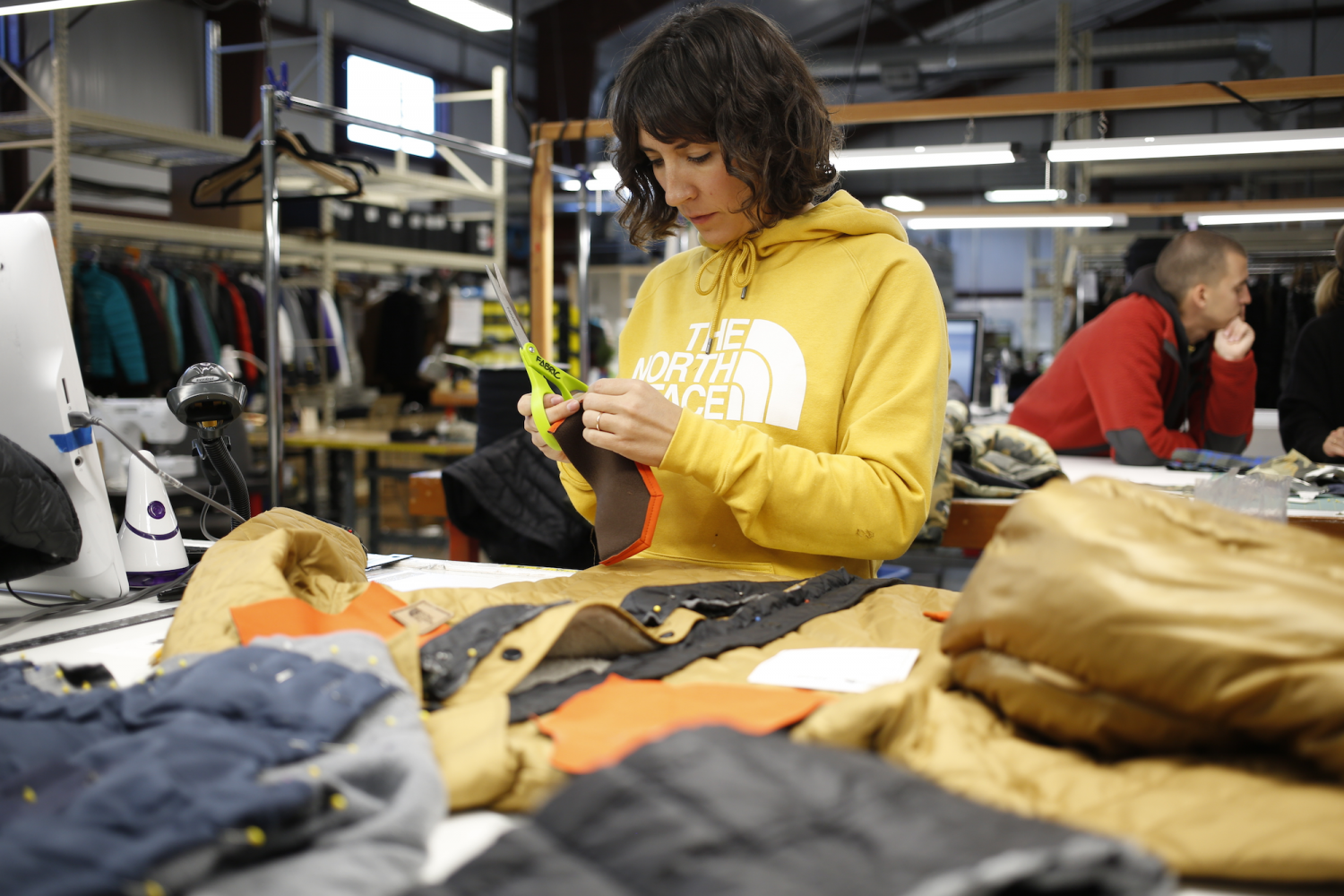
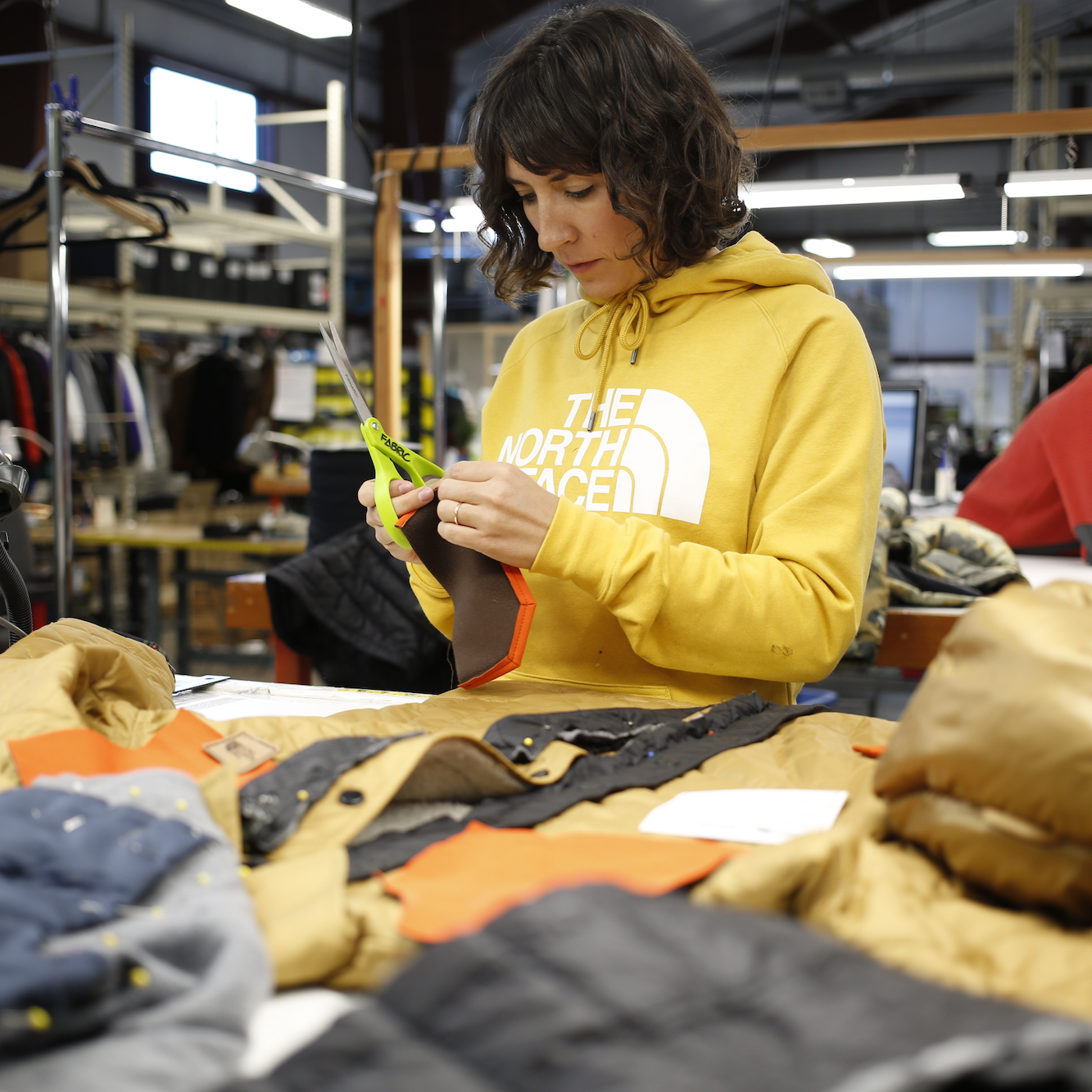
As more consumers—particularly young people—grow tired of the make, take and dispose culture that has come to define fast fashion, they're warming up to the concepts of circularity and reuse. The clothing resale market grew 21 times faster than the retail apparel sector over the past three years and is set to top $5 billion by 2023, according to market research.
Outdoor gear label The North Face was early to this party, having launched its re-commerce platform in 2018. The North Face Renewed collection includes refurbished clothing that is available for sale at steep discounts compared to buying new.
The California-based brand claims to have already diverted more than 200,000 pounds of used clothing from landfills—and this year, it's expanding the Renewed program to include an in-house design residency.
Rotating groups of The North Face designers will attend bi-annual sessions at the company’s Renewal Workshop in Cascade Locks, Oregon, to learn more about the principles of circularity. They’ll also create custom, one-of-a-kind pieces from garments that were previously thought to be irreparable, which will be available for online auction.
"We want to communicate that there is an opportunity to take a second look and to learn more about renewed products and how that can be a part of what the consumer journey looks like," said Amy Roberts, director of global communications and corporate social responsibility for The North Face.
With the Renewed Design Residency, the outdoor brand hopes to integrate circular design principles more firmly into the way it creates new products, Roberts said. And in a true example of being the change we wish to see, it all started with a bright idea from one conscious designer.
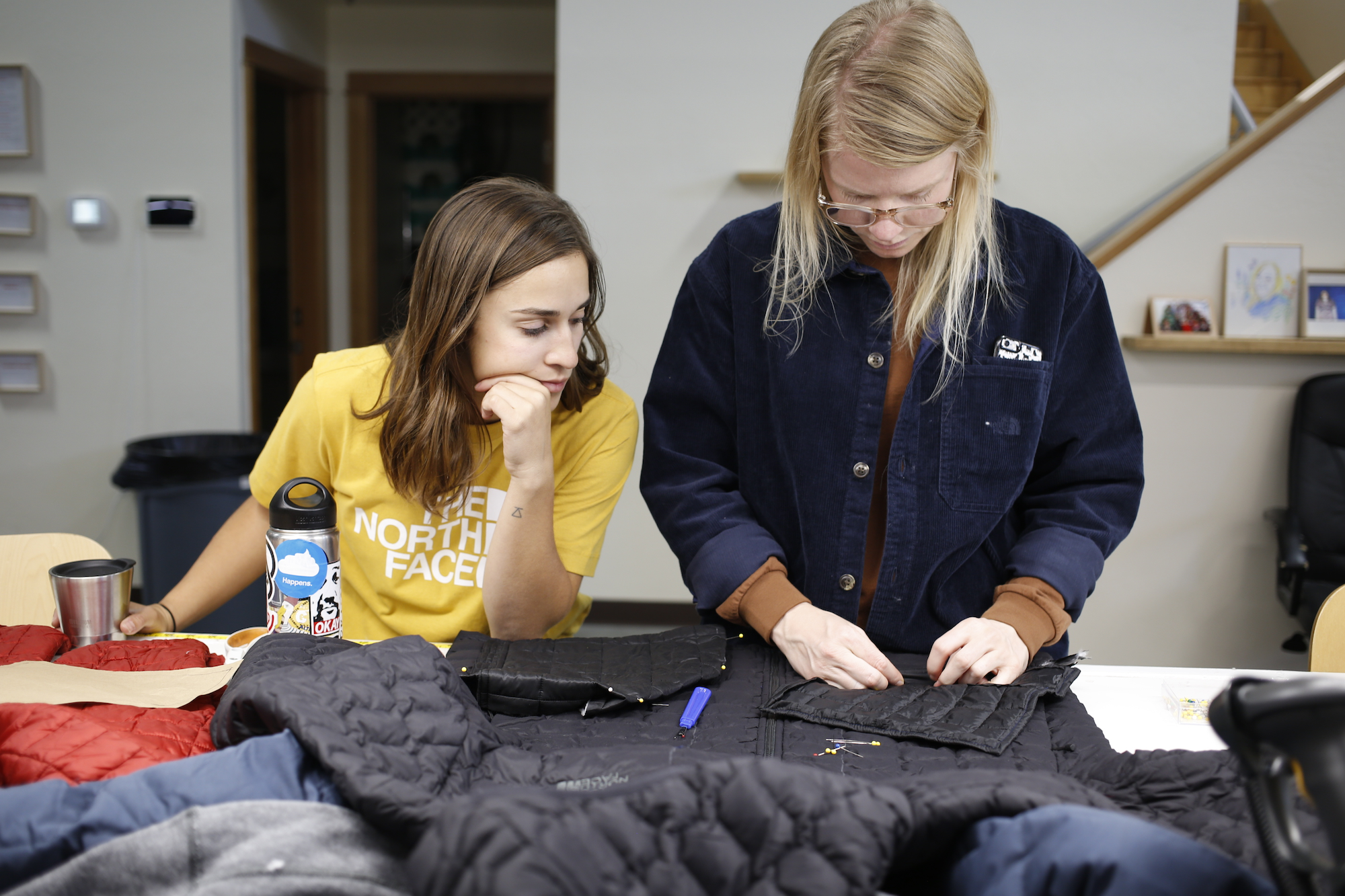
(Image: The North Face designer Kellen Hennessy (right) creates a new design from old garments in the brand's renewal workshop.)
One designer's idea sparks change at The North Face
Kellen Hennessy is a nine-year veteran of The North Face who works as a senior designer in its flagship outerwear segment. Last year, the self-described sustainability devotee asked to tour the Renewal Workshop because she was curious about the lifecycle of the products she helps to create.
"It was a really impactful and eye-opening experience," she told TriplePundit. "It’s one thing to be familiar with textile waste statistics and the challenges of the apparel industry in general, but it’s another to see a warehouse full of boxes. It really made me realize this was a problem that we could start to address from a design perspective."
Hennessy spent the day observing why products are returned and learning how they're refurbished, and she left knowing this was something her colleagues had to see. "If we can get a really educated design team, that’s the first step toward making a more circular process," she said. "A lot of it is about having more factual conversations about the challenges in our current system."
Her bosses and the team at the Renewal Workshop were on board, and less than a year later, The North Face is announcing its new residency to the public, with the goal of moving its entire design team through the process. "It's really exciting and promising for the brand," Hennessy said.
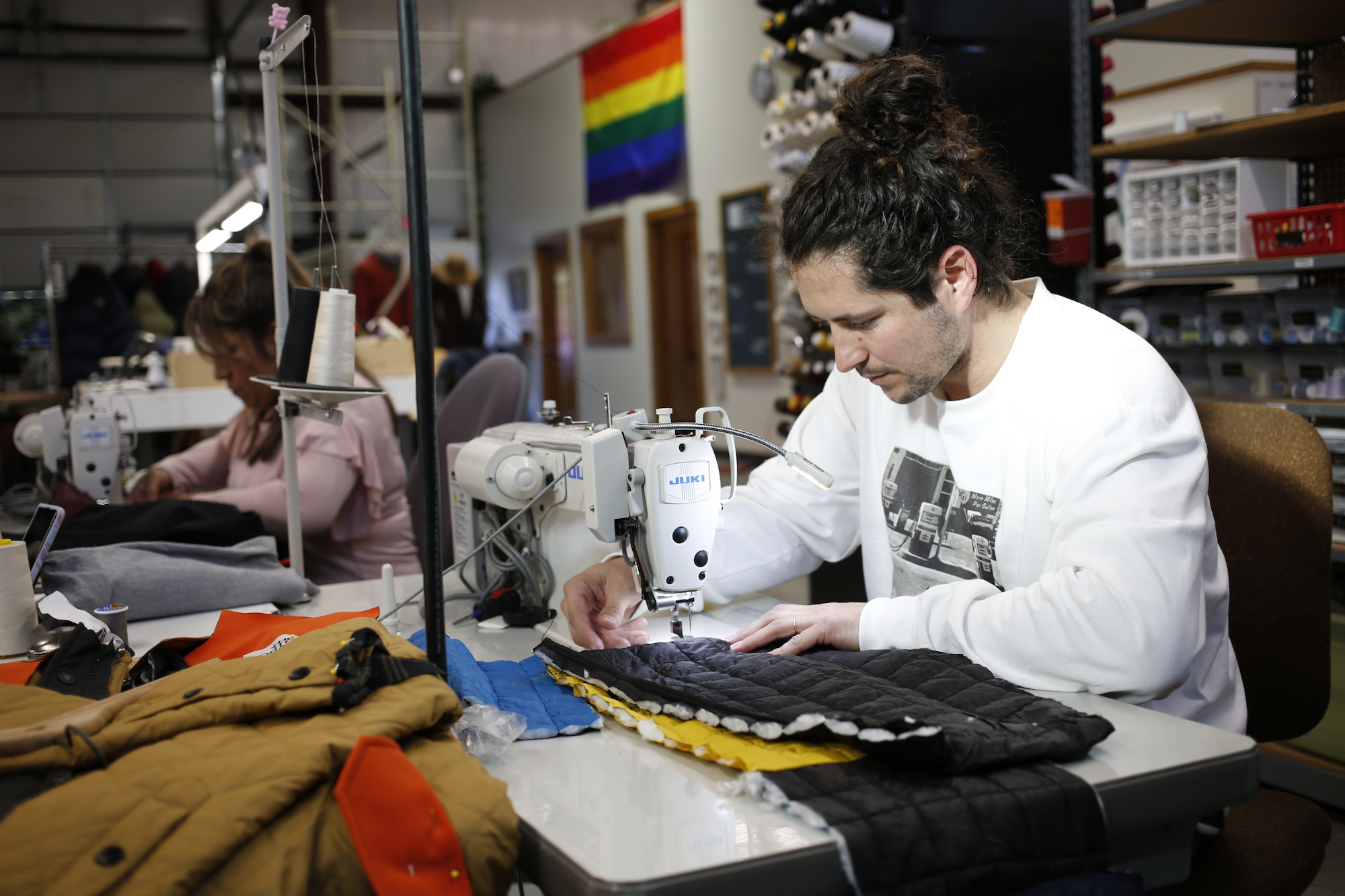
Inside the Renewed Design Residency
The Renewed Design Residency kicked off in October with a four-person pilot that included Hennessy and three other designers. The group toured the workshop, got their hands dirty rifling through boxes, and learned about the circular design challenges facing The North Face and other fashion brands.
Like Hennessy, fellow outerwear designer Rebecca Homen, women's lifestyle designer Danielle Mayer and men's lifestyle designer Cheyne Verhagen were shocked by what they saw.
"We had the whole rollercoaster of emotion through the process, because it's certainly overwhelming when you're literally rooting through boxes of products," Hennessy told us. "We all had that feeling of the impact of the scale. Knowing that we're one brand at one facility—and a very responsible brand at that—and then to think about the scale of the industry as a whole, there's a lot of work to be done."
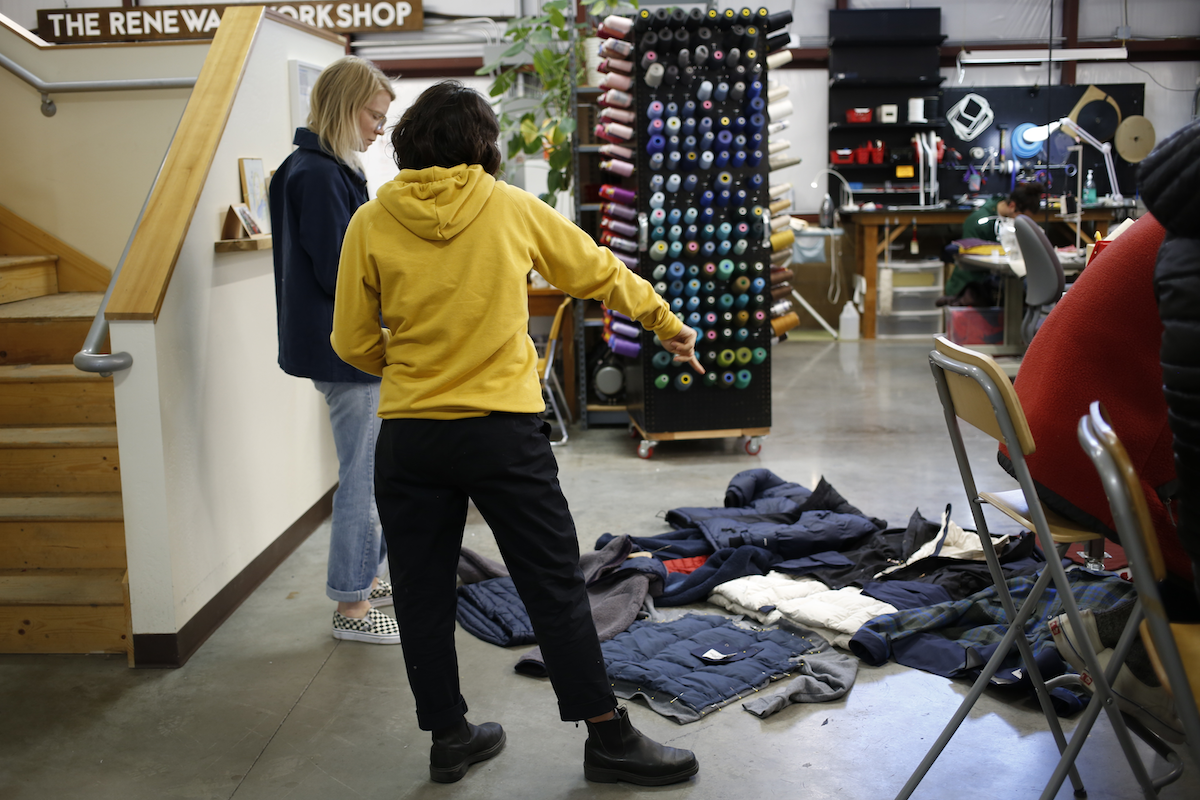
Still, this is more than a shock-and-awe campaign or a one-day crash course in circular principles. Examining the damage to returned products, the durability of certain materials and the construction elements that ease repairability imparts real lessons that designers can use today, Hennessy said.
"There’s so much potential creatively, but then you’re also surprised by some of the damages you see or the reasons garments are returned," she told us. "That can affect design choices down the line and hopefully give those products longer lifecycles by being more durable or more easily repairable."
The team also put on their thinking caps to create custom pieces from garments previously considered irreparable. "We all got kind of a buzz from being able to Frankenstein products together," Hennessy said.
The pieces will be available for online auction starting today, with proceeds benefiting environmental nonprofits through the The North Face Explore Fund. Moreover, the brand hopes the auction will generate excitement around its renewal programs and raise awareness about circularity.
"There's an opportunity to educate around specific data points that reflect the impact of apparel and footwear and how consumers can make choices that are also good for the environment," Roberts said. "We see it as being synergistic: We're making products that enable people to get outside, and at the same time we want to be a responsible steward of those places."
Each designer created their own bespoke garments, from sketch to sew. Keep scrolling for an inside look at the process.
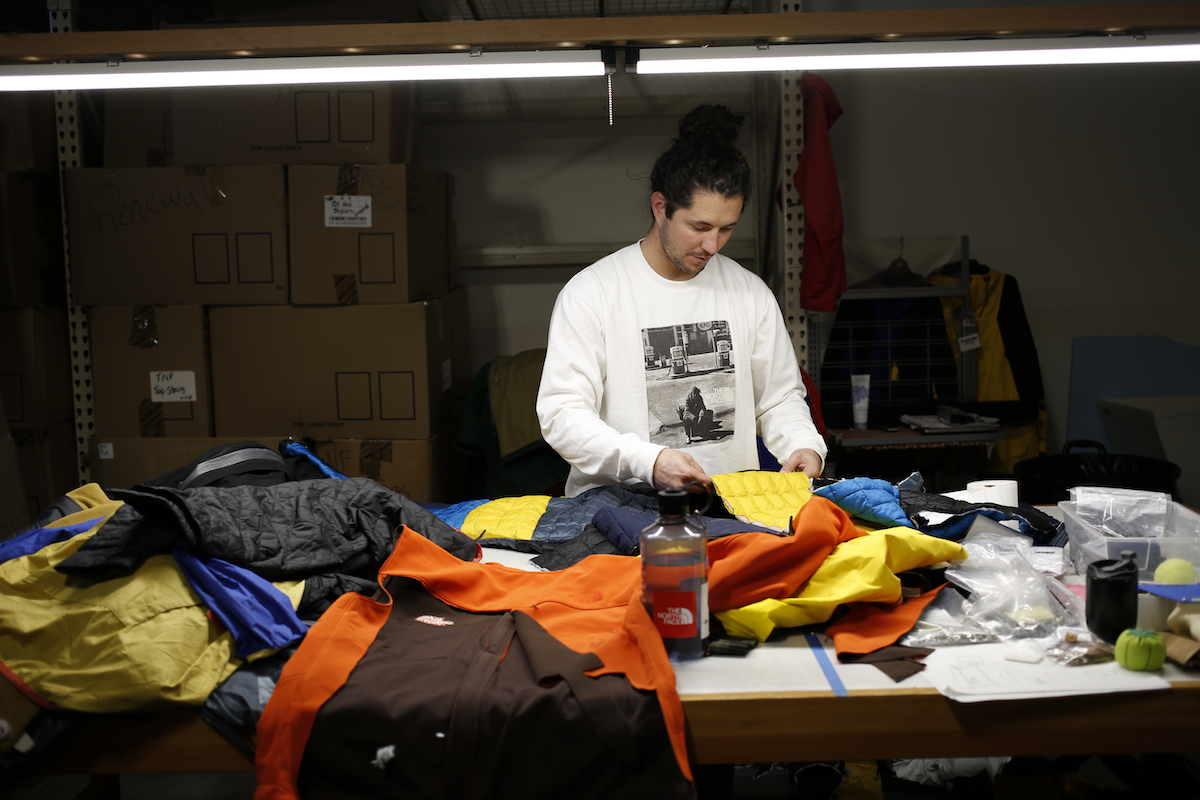
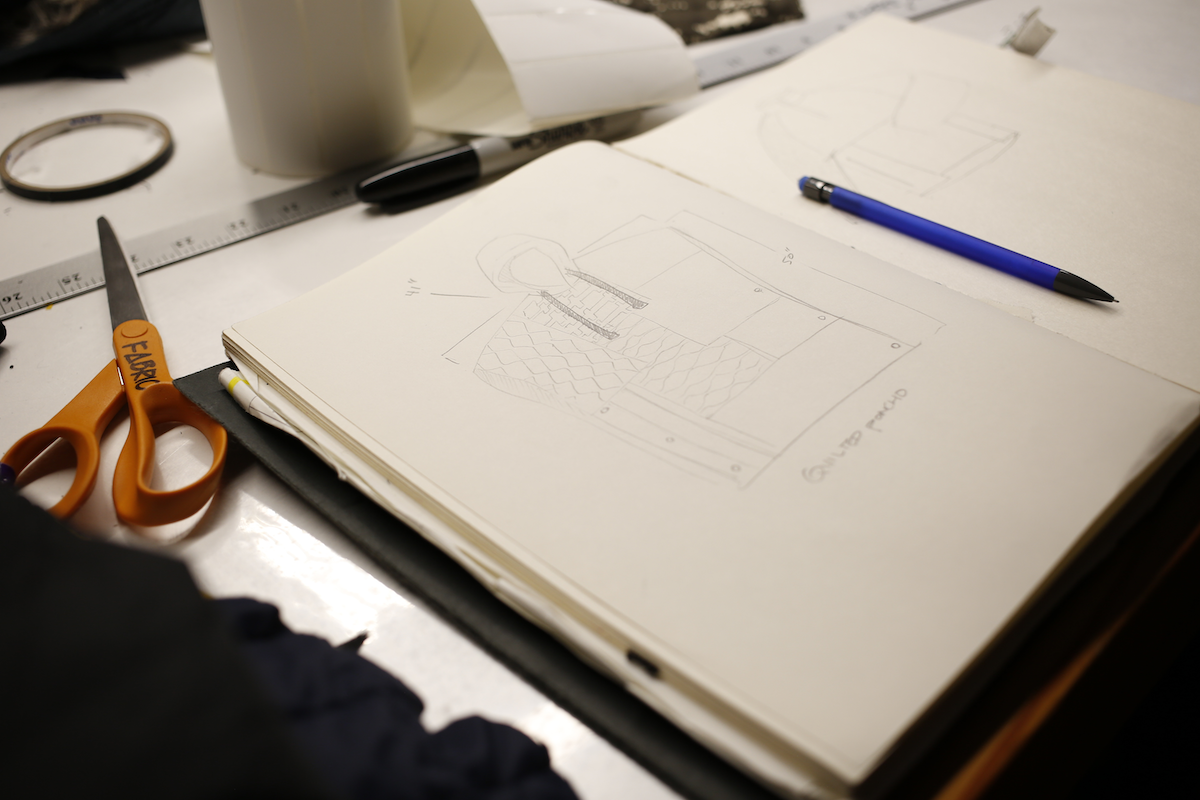
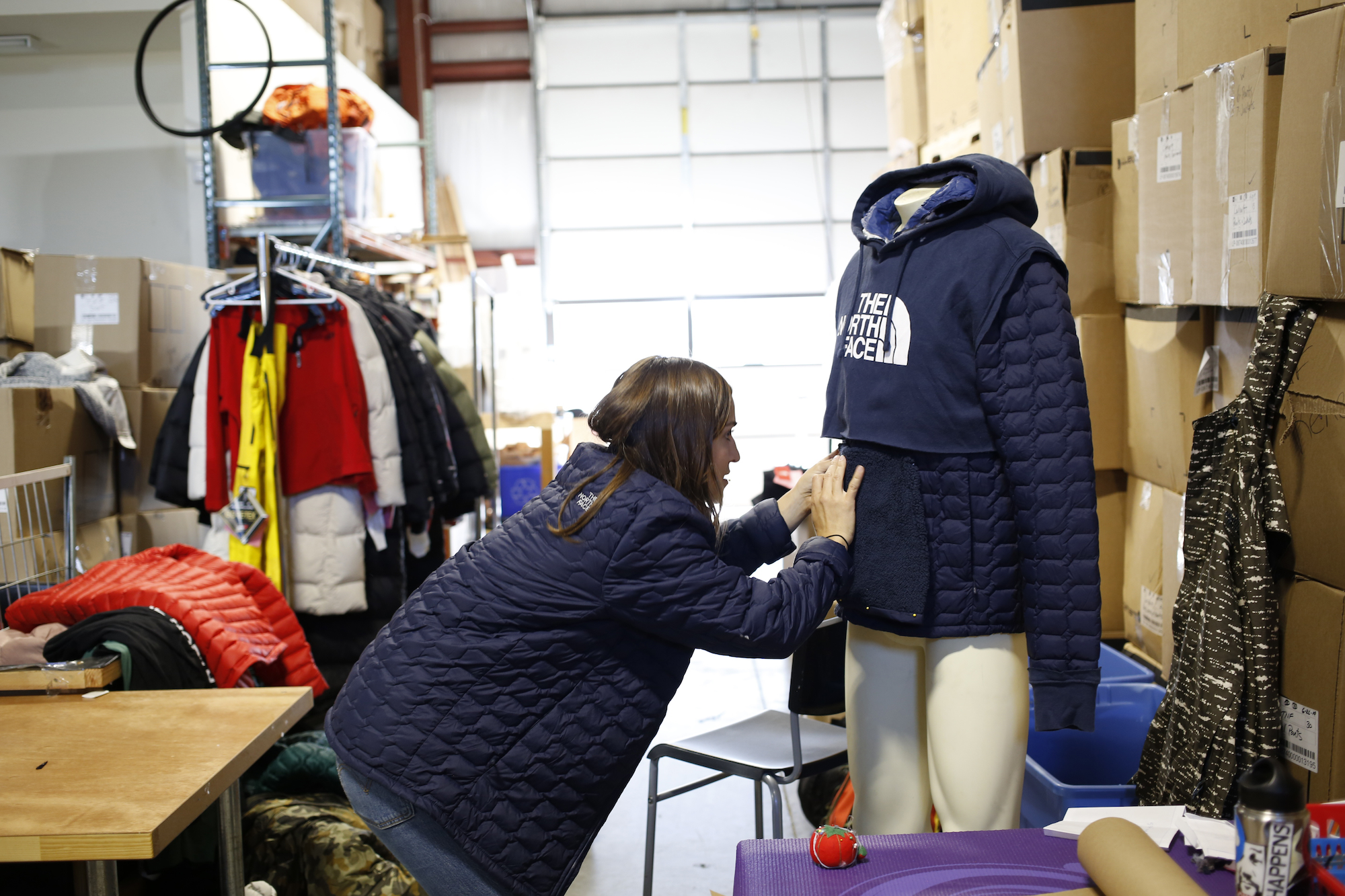
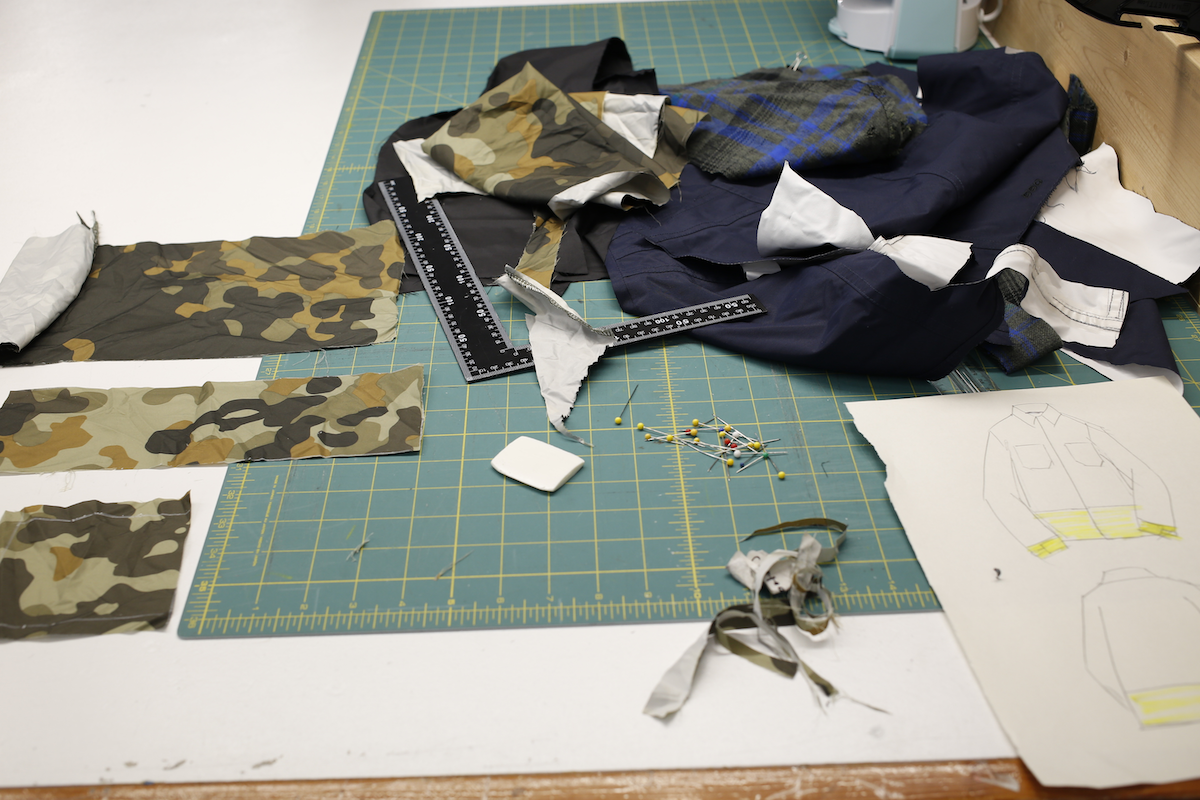
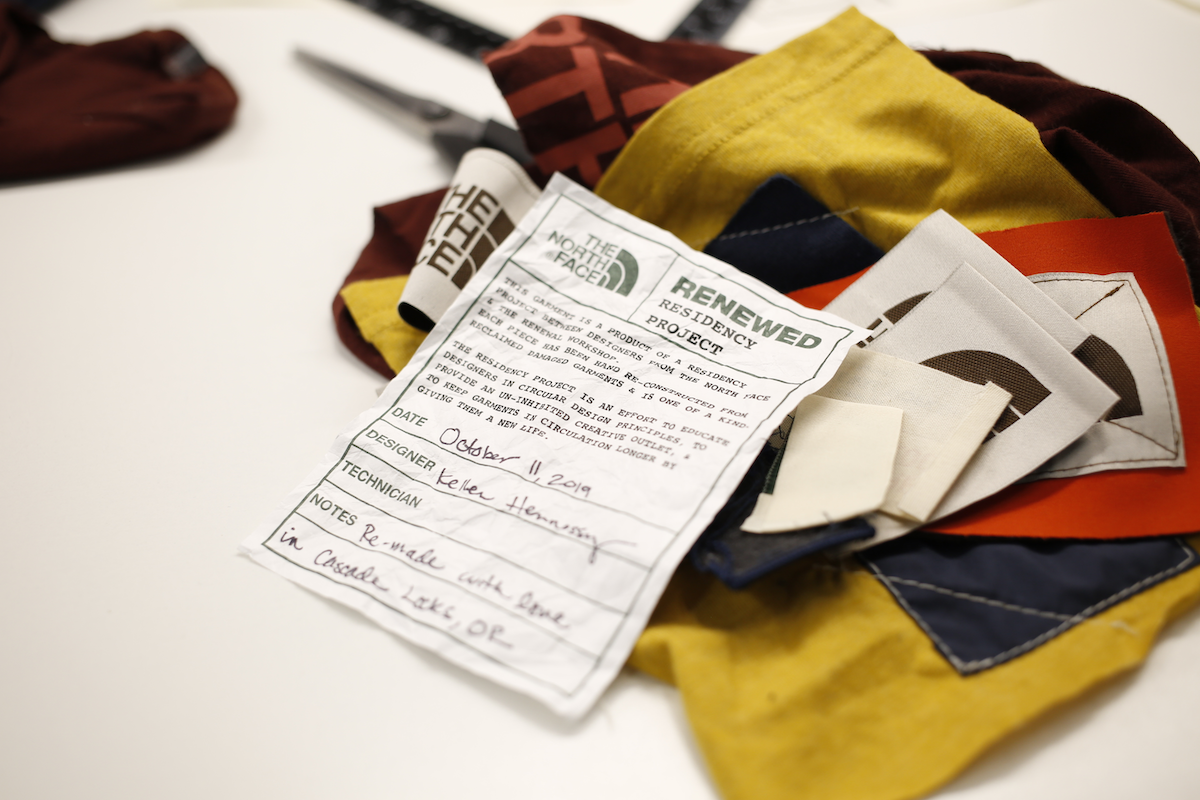
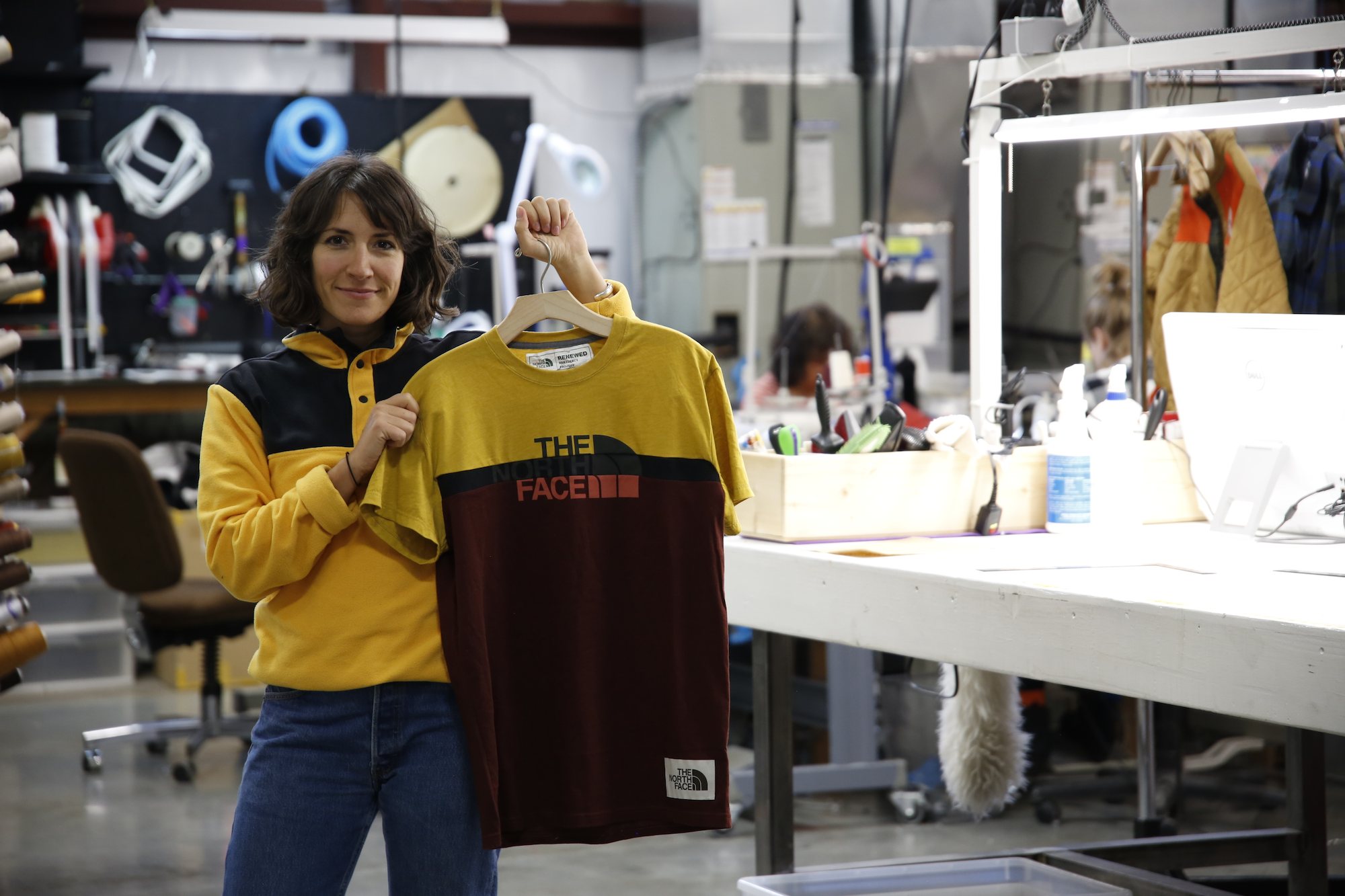
You can check out the pieces they created here and on The North Face Renewed website.
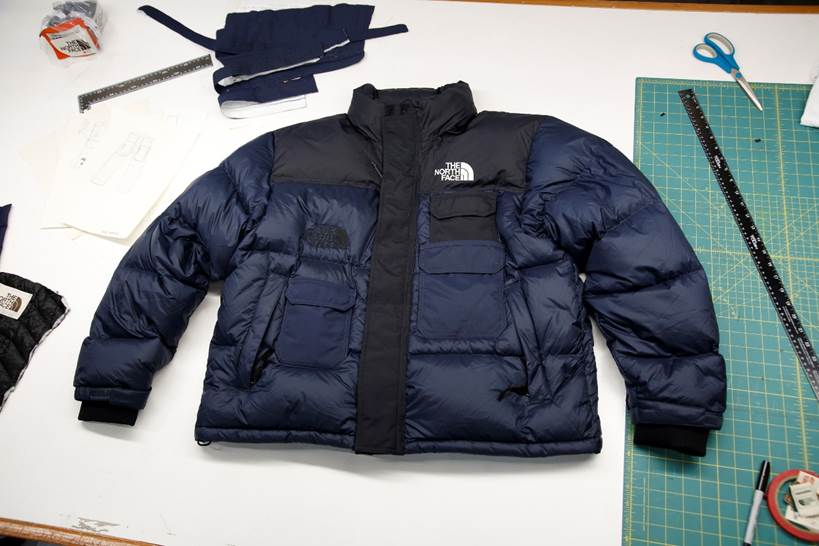
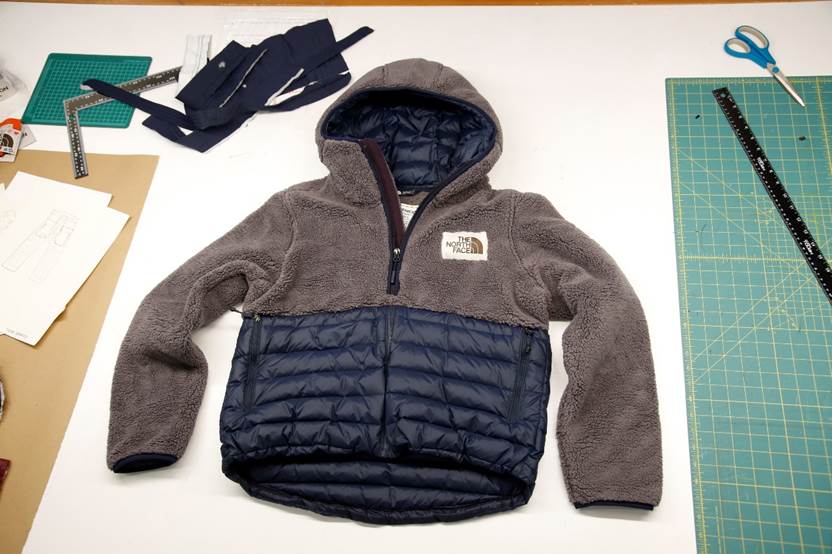
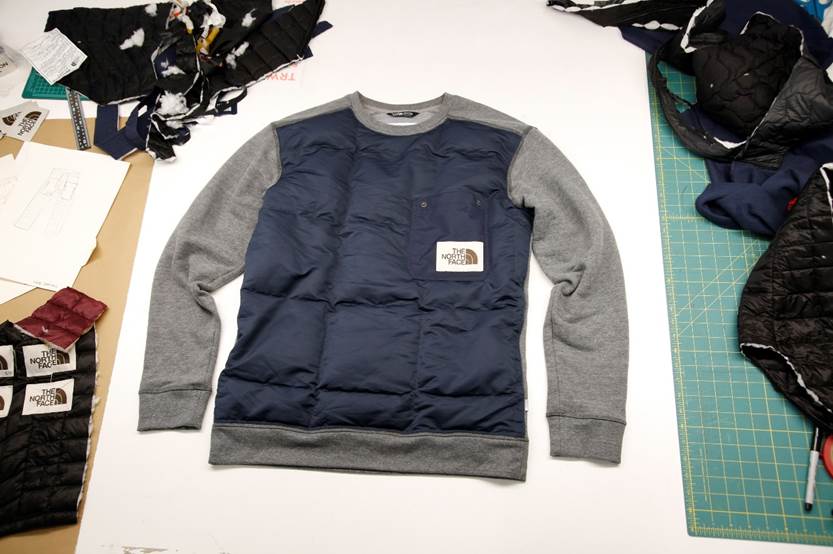
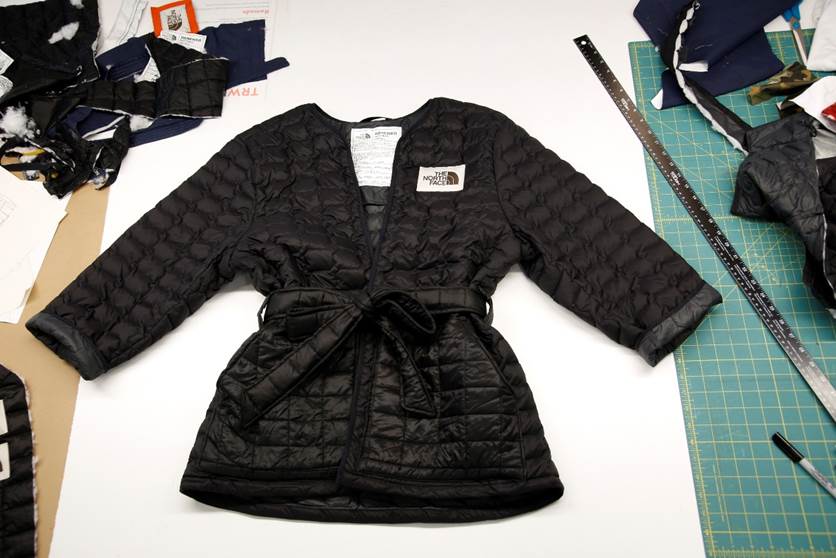
All images courtesy of The North Face
New Findings on Women’s Sports Reveal Roadmap for Equity


Ahead of the golden anniversary of Title IX, The Women’s Sports Foundation (WSF) released a report with findings about the state of women’s athletics in the United States, including calls to action. The report is titled “Chasing Equity: The Triumphs, Challenges, and Opportunities in Sports for Girls and Women.”
The data show that female sports are disadvantaged from elementary school through college. Even Title IX, established to protect activities like women’s sports, is not providing the necessary support to female athletics.
“Chasing Equity” finds that 83 percent of college coaches have never received formal Title IX training, and 31 percent of female coaches believe they would risk theirs job by speaking up about Title IX and gender equality.
Continuing to allow women’s and girls’ sports to play second fiddle to male athletics has negative impacts beyond gender.
Economic benefits of girls’ sports
A breadth of research shows that girls and women who participate in sports are healthier, happier, more productive and more empowered members of society. Investing in gender equity in American sports is investing in the prosperity of American society.
The WSF also makes the argument that participating in sports prepares young individuals for the workforce. Athletics teach children and young adults the values of teamwork, persistence, loyalty, confidence and much more, it says.
Female empowerment also pays off on an even larger scale. The PwC Women in Work Index 2019 identifies that increasing female employment in OECD countries to match that of Sweden, a jump of 12 percent, could boost overall GDP by $6 trillion. Closing the gender gap could add $2 trillion.
The gender gap has been found to cost OECD countries an average income loss of 15 percent. Supporting female sports can help bridge that gap.
Women's sports by the numbers
Data from 500 research studies and reports, as well as a survey of over 2,000 female sports leaders from across the country, reveal that girls’ sports participation is increasing, but barriers remain. Girls are still twice as likely to drop out of sports than boys.
And while female sports participation is on the rise, female coaching has seen a slump. In 1971, 90 percent of women’s college teams had female head coaches. Today, that number has dropped to 43 percent. Women currently only coach 23 percent of all college teams.
That’s not to mention the unequal pay athletes endure at the professional level.
Fair media coverage is one way to promote the value of female sports, the WSF says. Most women’s sports coverage focuses on major international events like the Olympics and soccer’s FIFA World Cup. Altogether, women’s sports have been allocated little more than 3 percent of sports media coverage in the United States.
Taking these results into account, the WSF has rounded up calls to action related to designing girls’ sports, funding programs, utilizing Title IX, promoting women leaders and improving female sports coverage. The recommendations are detailed and relevant to anyone who coaches, supervises, supports, funds or reports on female sports.
The Equity Project
The WSF itself is taking practical steps toward narrowing the gender divide in athletics with The Equity Project, launched in January. The project aims to bring together stakeholders across sports-related industries and sectors to identify measurable goals and outcomes for the organization’s calls to action.
“As the ally, advocate and consistent rallying voice in women’s sports for over 45 years, WSF has made a tremendous difference in helping girls and women reap the powerful, life-long benefits of sports participation — and the potential is there to accelerate the change even further," the Foundation's CEO, Deborah Antoine, said of the project in a press statement.
“We are excited to usher in the new decade with the launch of The Equity Project, a natural outgrowth of our Foundation’s strategy which is rooted in impacting participation, policy and practice in sustainable, measurable ways. Some may say this initiative is a very ambitious undertaking — we agree. Our Foundation is built on taking courageous action to change society for the better. We are resolute in achieving our vision that one day girls and women will no longer be chasing equity, they will be living it fully.”
Image credit: Jeffrey F Lin/Unsplash
Mohawk Exhibit Offers a Glimpse into the Ocean Plastic Crisis
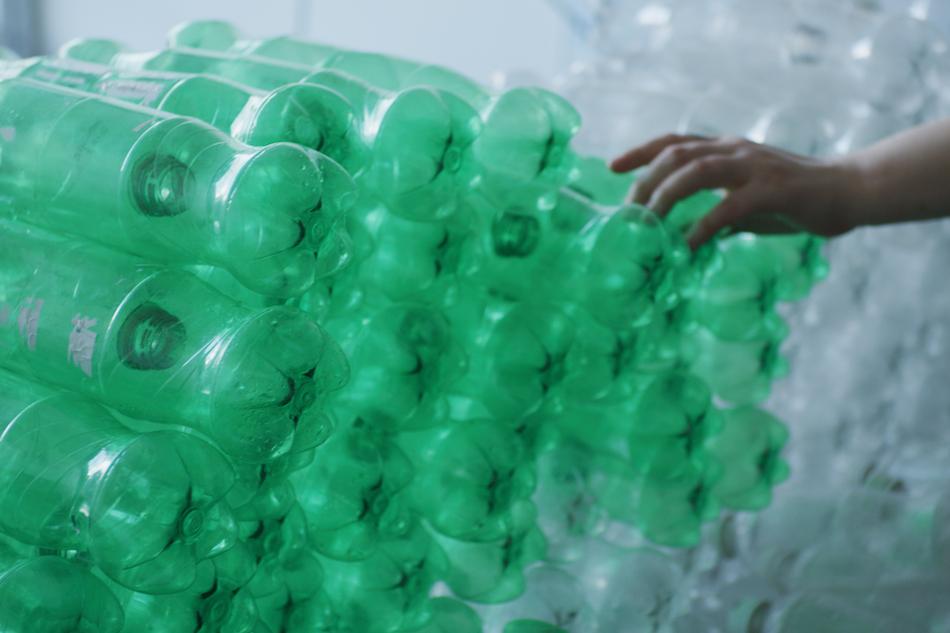
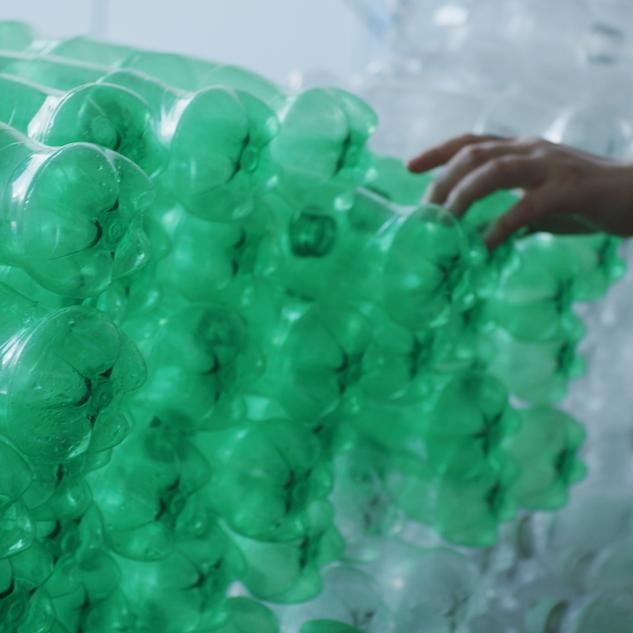
To show the world what the ocean plastic crisis looks like, Mohawk Industries sponsored an interactive art installation made out of upcycled materials at a trade show last week in Las Vegas. The display also served to announce Mohawk’s recent decision to become a supporter of The Ocean Cleanup, a Dutch nonprofit developing technologies to help remove plastic garbage from the world’s oceans.
Mohawk Industries, based in Calhoun, Georgia, is a global producer and distributor of flooring products, including carpet, tile and laminate. The company operates in multiple countries and ships around the world.
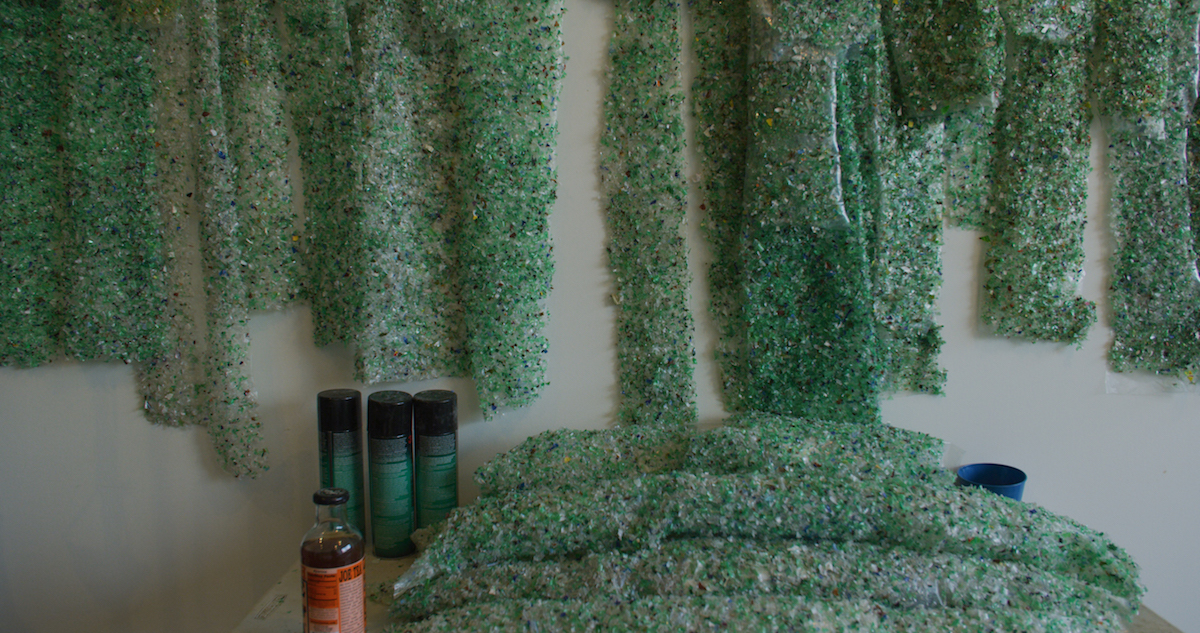
(Image: On closer inspection, what appears to be sea foam is actually made from plastic bottles and upcycled components and comprise Mohawk carpeting.)
Upcycled art focused on the ocean plastic crisis
Mohawk’s support of The Ocean Cleanup was clearly represented in the work of art. At first glance, you'll notice a colorful mix of bright greens and blues that make up the large waves in an ocean behind a sandy tan beach. But looking closely, visitors can see that those ocean colors are actually plastic bottles clogging up the water flow. More bottles are scattered next to a sign on the beach that reads, “Caution: Plastic Tide. Do not enter.”
Attendees were encouraged to add their own empty bottles to the interactive design or relax on the beach in front of the ocean waves. The showpiece was staffed with personnel prepared to answer questions about the materials and history of the showpiece. Basia Goszczynska, an artist and sustainability enthusiast headquartered in Brooklyn, was the designer.
The installation, titled “Overflow,” demonstrates the tangible consequences of a failure to take on the ocean plastic crisis and is a clear indication of the world’s responsibility to cut back on plastic waste.
Upcycled and recycled materials, including components that comprise Mohawk’s flooring products, were used to make “Overflow.” The art includes each stage of recycling that the company’s materials undergo before being manufactured into flooring products, from plastic to pellets to yarn.
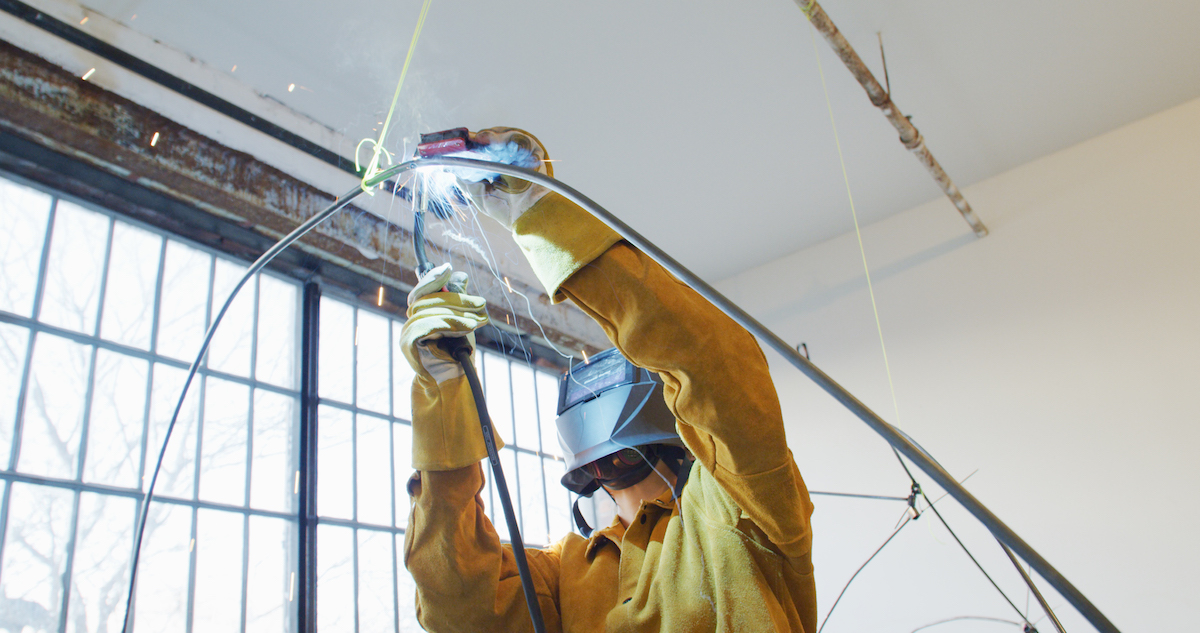 (Image: The installation under construction in Las Vegas.)
(Image: The installation under construction in Las Vegas.)
Handprints, not footprints
Mohawk says it's out to reduce its carbon footprint and increase its so-called "social handprint," and this installation is just one example of that commitment.
According to Mohawk, billions of tons of carpet and manufacturing waste pile up in landfills annually. To help cut back on that waste, the flooring company says it is pursuing zero-waste-to-landfill certification, which means its manufacturing plants must recycle or reuse at least 90 percent of their production waste. So far, 48 Mohawk plants have been certified, and the company claims it also reduced its waste-to-landfill intensity by 47 percent from 2010 to 2018.
Mohawk’s products are designed with an eye toward the company’s goal of using fewer natural resources. Its fully-recyclable line of carpets released several years ago was a big step for Mohawk, and now its efforts span across more initiatives to create innovative products that use less of Earth’s precious resources, such as water. The company also weaves upcycled and recycled materials into its various flooring products.
Mohawk continues to use more recycled content
One of Mohawk’s carpet product lines, Everstrand, is made with up to 100 percent recycled materials and recycled water bottles. Another recyclable flooring tile, Moduleo LVT, consists of up to 50 percent recycled industrial waste, with insulating components built in that can help reduce a household’s heating needs.
And that’s just the tip of the iceberg. According to the company’s 2018 report, Mohawk has recycled approximately:
- 42 million rubber tires into floor mats,
- 136 million pounds of foam and yarn waste into carpet pads, and
- Almost 7 billion water bottles into yarn fiber to be used in the flooring products.
Recycling is a vital factor in Mohawk’s production. The company’s ReCover carpet program donates leftover carpeting to nonprofits or reuses them for recycling. Mohawk has repurposed more than 31 million square yards of carpet since the ReCover program started 10 years ago.
These results and more from Mohawk’s sustainability plan tell the story of a company serious about reducing its carbon footprint, in contrast to other industry efforts critics say amounted to not much more than greenwashing.
As Mohawk’s sustainability achievements continue, its efforts for a cleaner environment could serve as a wake-up call for its competitors to take on this challenge and reduce the vast amount of industrial materials that go into landfills, making the flooring industry one of the more wasteful ones in the U.S.
Image credit: Mohawk Industries
Corporate Leaders Pick Up Where Federal LGBTQ Policies Fall Short
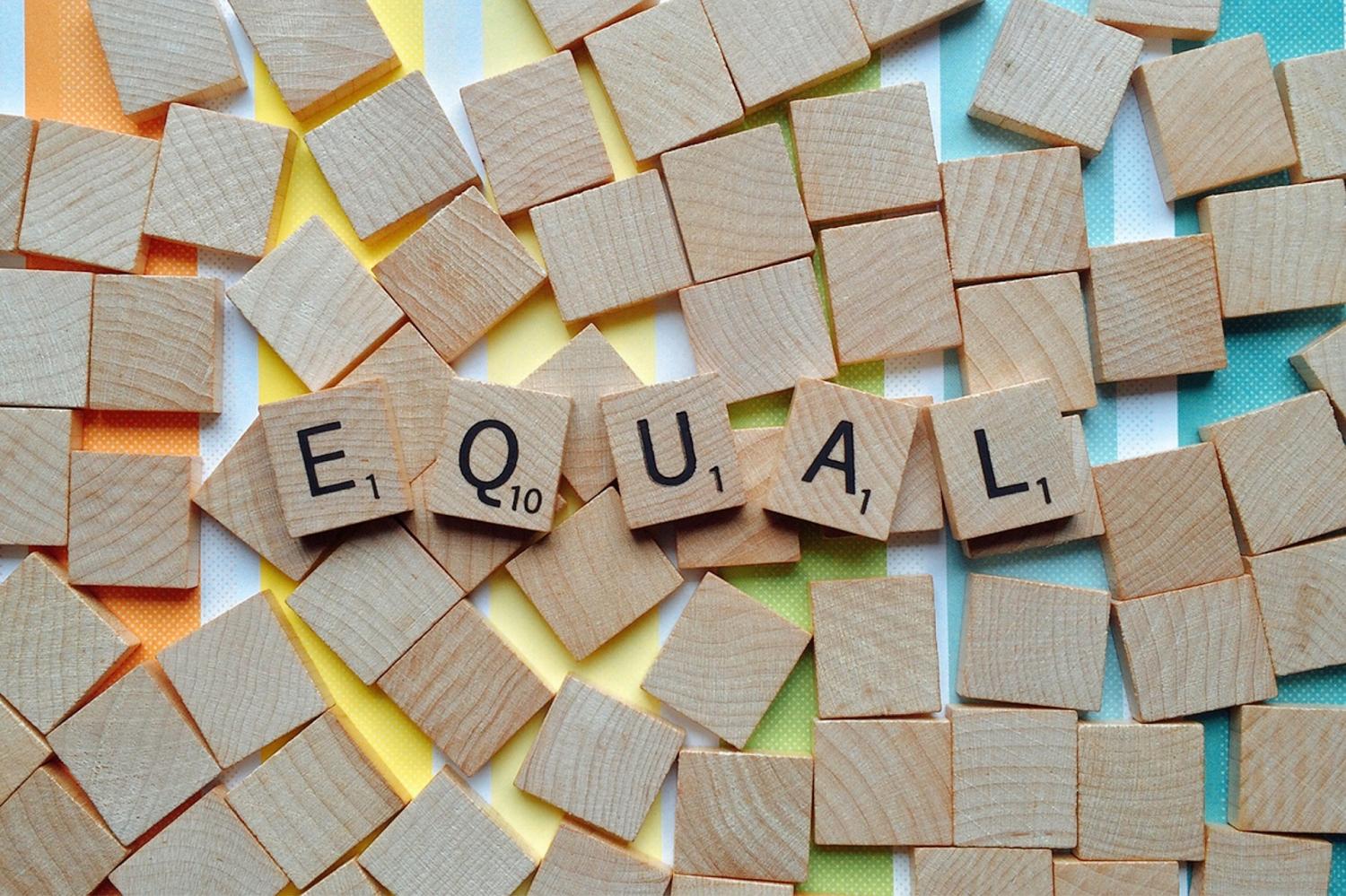
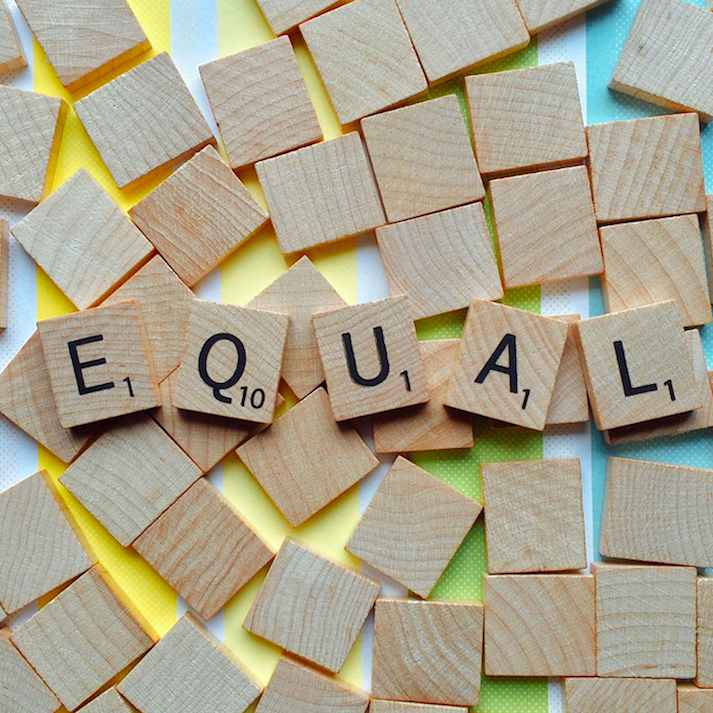
Wells Fargo, Fifth Third Bank and a handful of other companies opened up a significant new front in the fight for LGBTQ rights last week when they confirmed they would no longer donate to Florida’s private school voucher program. The news came after the Orlando Sentinel found that a significant number of schools in the program openly denied entry to LGBTQ students or children of LGBTQ parents, while many other schools refused to affirm that they maintain a non-discrimination policy for LGBTQ students and their families.
States’ rights, LGBTQ policies and corporate social responsibility
The Florida situation illustrates how the federal policy void on LGBTQ rights leaves corporations vulnerable to state regulations and programs that run counter to their social responsibility goals.
Rather than relying on a single, consistent national standard, corporations that score high on LGBTQ rights need to exercise vigilance over discriminatory practices on a state-by-state, politician-by-politician basis.
This particular case involves the Florida Tax Credit Scholarship fund, a school voucher program administered by an organization called Step Up For Students.
Since 2001, the fund has enabled corporations to make tax-deductible contributions for need-based scholarships at private schools.
On January 23, the Orlando Sentinel published a report on LGBTQ policies at 1,000 private schools participating in the voucher program.
Among those schools, the Sentinel counted dozens of religion-affiliated institutions that openly professed policies against LGBTQ students and their families.
“In Florida last year, 156 private Christian schools with…anti-gay views educated more than 20,800 students with tuition paid for by state scholarships,” reported Leslie Postal and Annie Martin of the Sentinel.
“That means at least 14 percent of Florida’s nearly 147,000 scholarship students last year attended private schools where homosexuality was condemned or, at a minimum, unwelcome,” they added.
The reporters further note that Florida state law prohibits discrimination on the basis of race, color or national origin. However, as with federal law, Florida state law does not protect LGBTQ individuals.
Calling out LGBTQ discrimination
Wells Fargo and Fifth Third responded quickly when challenged on their financial support for the voucher program.
A January 28 editorial by the Sentinel Editorial Board published an editorial citing those two companies among several others that have contributed to the scholarship fund.
A full list is of contributors is not available through Step Up For Students, but the Sentinel gleaned the names of Fifth Third Bank, Wells Fargo, Geico and Waste Management from other sources.
All four companies publicly profess to support LGBTQ rights but “still elect to send their tax money to a voucher program that props up schools openly practicing discrimination against gay kids and families,” wrote the Editorial Board.
On the day of the editorial, Fifth Third deployed Twitter to announce that it will stop supporting the fund.
Wells Fargo also confirmed its withdrawal in a statement to NBC News and CNBC.
"All of us at Wells Fargo highly value diversity and inclusion, and we oppose discrimination of any kind,” the company said.
Corporations take preemptive action
As of this writing there has been no public statement from Geico. On its website, the company notes that it has contributed $33 million to Step Up For Students since 2010 while affirming “we recognize that each child is unique…and our investment in Step Up For Students will provide options to those who need it most.”
Waste Management also has yet to respond.
However, other companies that were not mentioned in the Sentinel editorial have already taken preemptive action.
On January 31, Allegiant Air publicly stated that it would stop contributing. “We sincerely hope that in the future the program can establish clear, strong policies against discrimination of any kind, and properly vet participating schools to ensure they meet those standards,” the company said.
On February 2, NBC News reported that the timeshare company Wyndham Destinations would withdraw from the program. In its public statement, the company also noted that it had previously warned Step Up For Students that it would stop contributing to the fund if the agency did not address the discrimination issue.
Another leading corporation associated with the scholarship fund is the financial services holding company BB&T, which donated $3 million last year.
BB&T has not responded to the Sentinel report as of this writing, but it may soon have something to say.
Just last week, BB&T received a top grade for LGBTQ rights from the Human Rights Campaign 2020 Index.
Money talks: stepping up for all students
All of this comes at a fraught time for LGBTQ individuals and families in Florida, who are faced with a fresh wave of discriminatory legislation.
The organization Equality Florida has advocated successfully for local laws to protect against LGBTQ discrimination, but an effort to pass similar anti-discrimination legislation at the state level has yet to break through.
Meanwhile, last month seven Republican state legislators filed four bills aimed at repealing local LGBTQ anti-discrimination ordinances, lifting a statewide ban on conversion therapy and criminalizing health care professionals who treat transgender minors.
Nevertheless, the Sentinel report may have already sparked a turning point for LGBTQ rights in Florida.
In an interview with WLRN last Friday, Florida State Representative Carlos Guillermo Smith (D-Orlando) said that Education Commissioner Richard Corcoran had begun taking steps to end anti-gay discrimination in the voucher program.
“The commissioner…understands that if he doesn't stop the bleeding as it relates to the withdrawal of corporate sponsorships from the program, then the financial integrity of the program is at risk,” Guillermo said.
If additional corporate leaders withdraw from the Florida school voucher program, they will send a clear and simple bottom-line message of broad support for LGBTQ rights. That’s a language any politician can understand.
Image credit: Pixabay
‘Civics-Washing’ In Play Over New Voter Turnout Drive
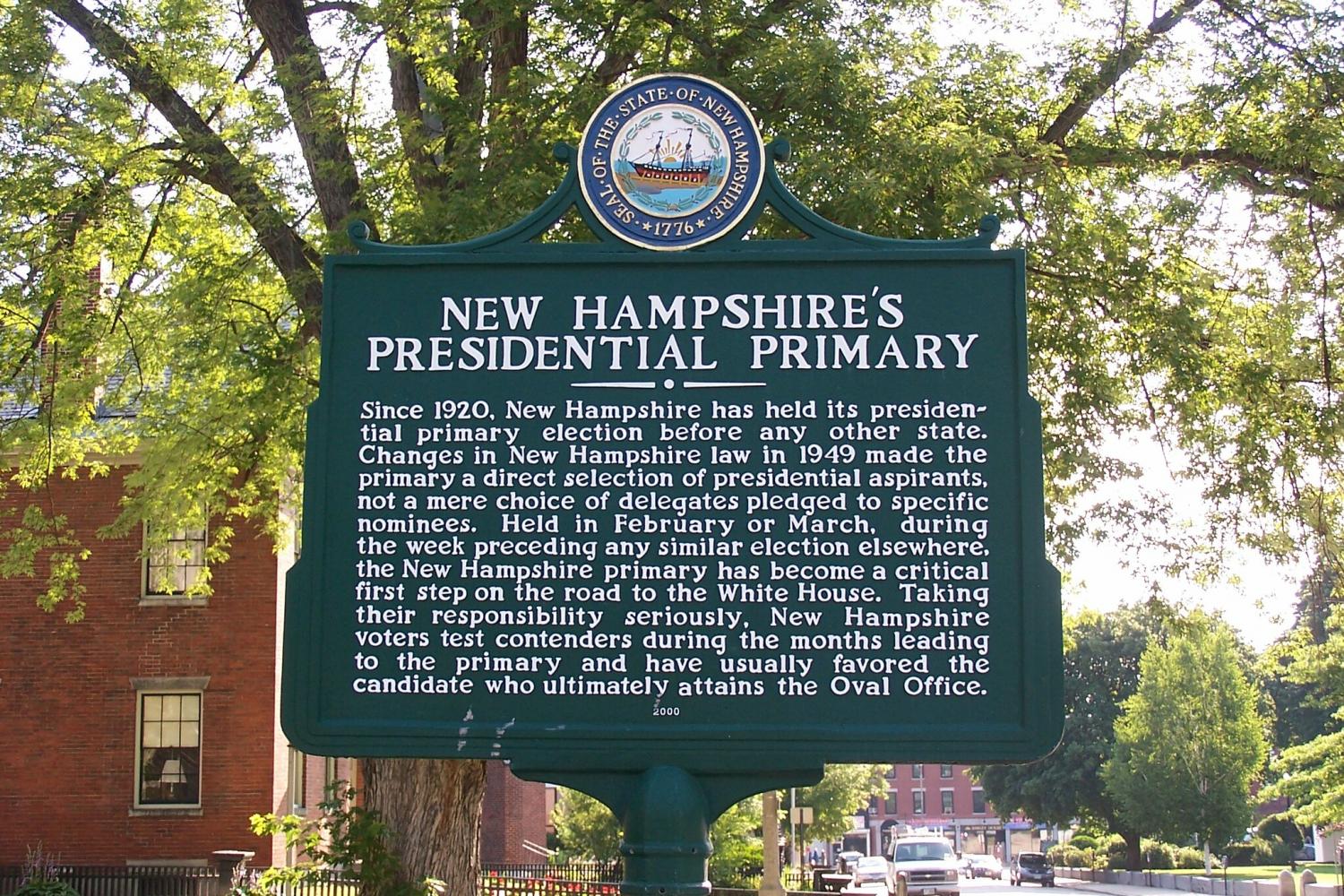
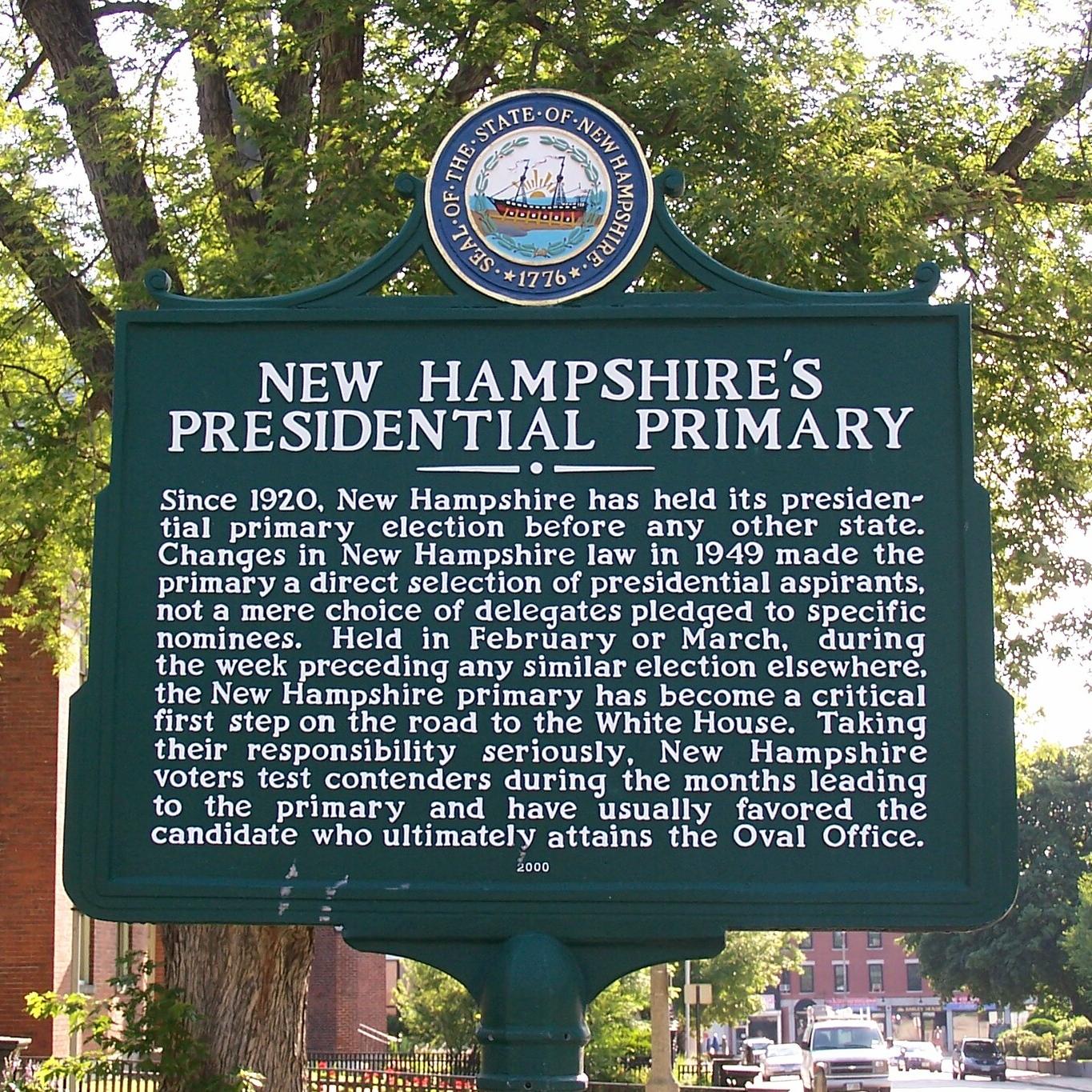
A new nonpartisan corporate initiative called Civic Alliance launched last month. The organization joins dozens of leading U.S. brands in a common effort to help increase voter turnout, encourage participation in the 2020 census, and foster a long-lasting culture of civic engagement. That’s all well and good, but in the age of social media a note of caution is advised.
A strong foundation for civic engagement
Civic Alliance was founded by Democracy Works, an organization that focuses on software and other infrastructure issues related to election integrity, and the CAA Foundation, an advocacy arm of the U.S. entertainment industry.
The two groups have recruited an impressive roster of corporate firepower to advance their voter turnout and civic engagement goals.
Among the dozens of leading brands already on board are Gap, Starbucks, Salesforce, Univision, Spotify, the country music organization CMT, AT&T’s advertising and analytics branch Xandr, and MTV.
The Civic Alliance also counts Amazon, Lyft, Microsoft, Urban Outfitters, Verizon Media, VHI, Warby Parker and WordPress on its roster, in addition to many other companies.
A word of caution on social media
In addition to the social media members of Civic Alliance include Snapchat, Twitter, Reddit, Tumblr, Instagram and Facebook.
And, that’s where things get interesting – and not just because the famous horror novelist and outspoken White House critic Stephen King quit the social network over his allegations that the company is ineffective or unwilling to protect users’ privacy.
Although all forms of social media have faced criticism over unfiltered, misleading or untruthful content, in recent years Facebook has garnered especially sharp attention over its apparent influence on the 2016 U.S. election cycle.
The particulars include Facebook’s role in amplifying Russian-influenced social media campaigns, and its reported violations of user privacy in relation to data collected by the firm Cambridge Analytica.
Civics-washing in play?
In this context, Facebook’s decision to support any civic engagement or voter turnout campaign appears to be little more than an attempt to mute its critics, and the company’s actions in recent months appear to validate the skeptics.
Last month the company announced new policies that make it easier for users to determine which political adds they see. However, in a January 9 blog post, Facebook’s Director of Product Management, Rob Leathern, reaffirmed that the company will not fact-check political ads.
Promoting voter turnout yet shrugging at misinformation
Short of hate speech and other content already covered by Facebook’s community standards, Leathern wrote that “people should be able to hear from those who wish to lead them, warts and all, and that what they say should be scrutinized and debated in public.”
By “warts and all,” Leathern was apparently referring to Facebook’s intent to continue allowing misleading or untrue statements in political advertising, so long as they do not break its community standards.
In that regard, Facebook has made two significant moves that indicate a willingness to accommodate more misinformation on its platform, not less.
Last fall the company launched Facebook News with the organization Breitbart included within its partner sources. The move was widely panned by media observers due to Breitbart’s reputation for amplifying conspiracy theories, among other issues.
Last week Facebook also tapped former “Fox & Friends” senior producer Jennifer Williams to steer its new video strategy.
Media Matters was one of many observers taking note of Ms. Williams’s employment history. “As Facebook executives plan a shift in the way the nation consumes news that will almost certainly impact the 2020 presidential elections, they are staffing up with an 18-year veteran of the right-wing cable network that effectively serves as President Donald Trump’s personal mouthpiece,” Media Matters stated.
Adding fuel to the misinformation fire
Facebook co-founder and CEO Mark Zuckerberg himself also recently seemed to affirm that the company would continue enabling misinformation in political advertising.
During a speech last Friday at the Silicon Slopes Tech Summit in Utah, Zuckerberg pushed back against calls for his company to set standards for the content of political advertising.
As reported by CNN, Zuckerberg did acknowledge that Facebook is responsible for taking down material related to terrorism, child exploitation and incitement to violence. Aside from that, though, the company is not responsible for factual accuracy.
“At some point, we’ve got to stand up and say, ‘no, we’re going to stand for free expression,’” Zuckerberg said in remarks cited by sources including the Associated Press.
“Yeah, we’re going to take down the content that’s really harmful, but the line needs to be held at some point,” he said.
Baby steps on truth in political advertising
Drawing a line between “really harmful” and everything else may not be enough to shield Facebook from additional criticism.
Facebook has been steering attention to Senate Bill 1356, the Honest Ads Act, to demonstrate its support for federal legislation that regulates political advertising.
However, the Honest Ads Act does not address misleading or untruthful content. It only requires media platforms to keep detailed records about ad buyers and disclose their identities.
The real problem with political content on Facebook was pinpointed in 2016 by two researchers, who coined the term “firehose of falsehood." Under that strategy, the propagandist throws so many different lies out into the public sphere, so rapidly and in such great numbers, that the facts lose their power to persuade.
The Civil Alliance appears to be on track to get more citizens, perhaps millions more, to the to the polls this year due to its voter turnout efforts. One central issue remains, though. If social media platforms like Facebook fail to adjust their policies in support of truth in political advertising, will all those voters make their decisions based on fact, or fiction?
Image credits: J. Stephen Conn/Flickr; Joseph A./Flickr; Parker Johnson/Unsplash
UPS Tired of Waiting for Electric Vehicles, Decides to Make Its Own
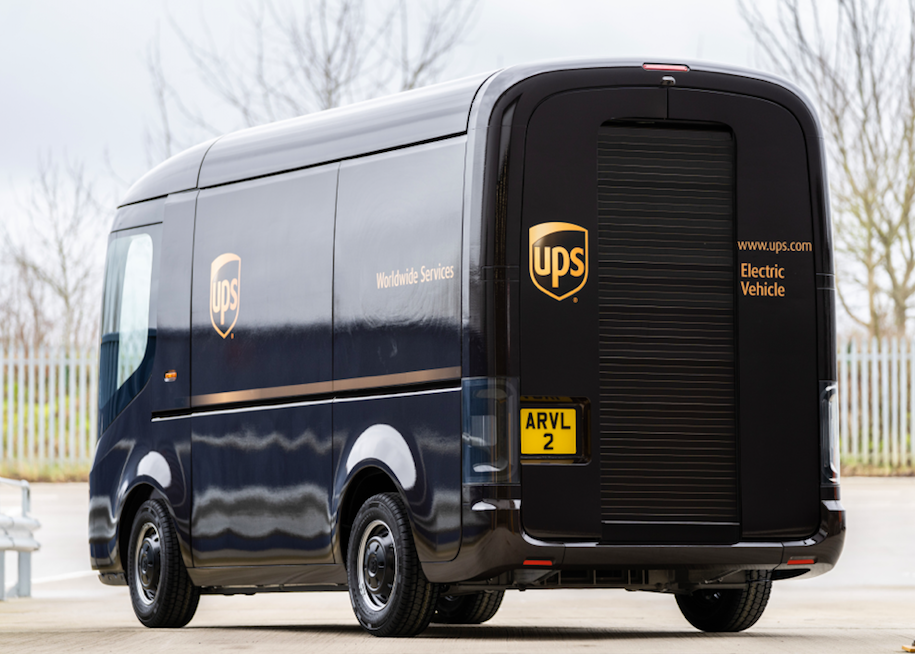
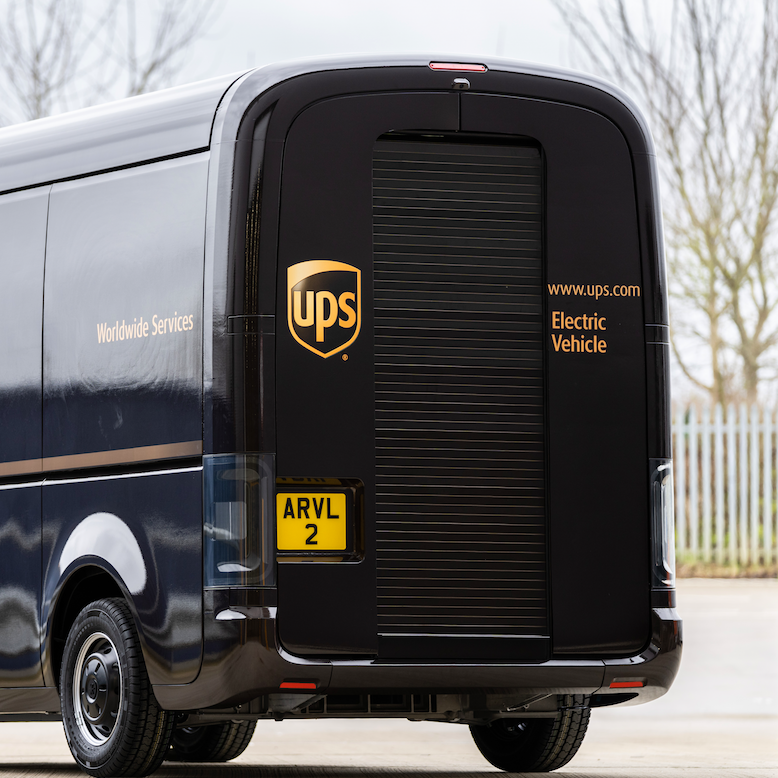
Fleet managers seeking zero emission vehicles have to play a waiting game, while major auto makers slowly adapt their factories and supply chains to new technology. Now, UPS is trying something new: it has invested in an electric vehicle startup called Arrival. The equity arrangement gives UPS dibs on the first 10,000 vehicles produced in Arrival’s new factories.
Purpose-built electric vehicles for special tasks at UPS
Aside from enabling UPS to cut the line for electric vehicles — and cut emissions from its delivery fleet — the company also expects its collaboration with Arrival to create new efficiencies that reduce costs.
As a general rule, electric vehicle fleet owners can anticipate lower costs for maintenance and repairs because electric systems involve fewer moving parts than internal combustion engines. Arrival builds on that advantage by deploying a modular design and standardized parts, including lightweight materials that it fabricates in-house.
To gild the electric vehicle lily, Arrival is also working with UPS on advanced driver assist technology tailored to UPS depots.
If all goes according to plan, the automated system will create new efficiencies in back-office activities as well as in maneuvering, loading and unloading within the depots.
To scale up electric vehicle manufacturing, first scale down
Perhaps the most interesting aspect of the new partnership is Arrival’s unique manufacturing model.
Instead of relying on large, centralized factories, the company plans to establish a number of “micro-factories.”
Depending on where and how the new factories are sited, the arrangement could provide UPS with an opportunity to bring new jobs into communities that need them, rather than encouraging workers to uproot and follow jobs to remote locations.
Aside from the potential benefit to community well-being, the micro-factory concept also provides opportunities for cutting emissions related to worker commutes.
More community benefits from electric vehicles
The idea of small scale, local auto production may seem like a throwback to the days before Henry Ford began mass-producing the Model T. However, 3-D printing and other new technologies have opened up new opportunities for ramping down the size of factories, while also making customization more economical and efficient.
The small-scale manufacturing model caught the eye of the U.S. Department of Energy (DOE) several years ago. In consideration of past collaborations between the DOE and UPS, it’s possible that the agency will keep an eye on the UPS-Arrival venture.
UPS began exploring the idea of a technology partnership with Arrival in 2016, the same year that the company received a DOE grant to help develop a drive-over electric vehicle charging system with vehicle-to-grid capability.
Vehicle-to-grid refers to the idea that electric vehicles are mobile energy storage systems. With the right equipment, the vehicle battery can supply electricity to the local grid or to buildings, field lights and other equipment including other vehicles.
The new chargers could potentially provide both UPS with additional community benefits, by enabling it to provide power for emergency responders and other users in case of a local blackout.
Whatever happened to natural gas?
UPS’s big move into electric vehicles is also interesting, given that just a few years ago the company was championing compressed natural gas as the clean fuel of the future. However, falling costs and improvements in electric vehicle technology are putting a damper on the prospects for expanding the use of natural gas in the transportation sector.
To be clear, UPS is still dedicating resources to compressed natural gas. Just last December, the company announced a new round of 6,000 CNG trucks at a cost of $450 million.
That’s not necessarily good news for natural gas stakeholders, though. Thanks to an alternative fuel onboard system provided by the company Agility Fuel Solutions, the new CNG trucks can include hydrogen among a roster of other fuel options.
Agility also includes hydrogen among its roster of options. That’s another interesting angle, considering that UPS has already shown an interest in pursuing electric vehicles equipped with hydrogen fuel cells.
Though the primary source for hydrogen today is fossil gas, Agility’s connection with renewable sources — including wind and solar power as well as biogas — creates the potential for a renewable hydrogen pipeline.
In light of new evidence about the public health and environmental impacts of the fossil gas supply chain, UPS’s shift to a more sustainable transportation model will serve both the bottom line and its community engagement profile, too.
Image credit: UPS